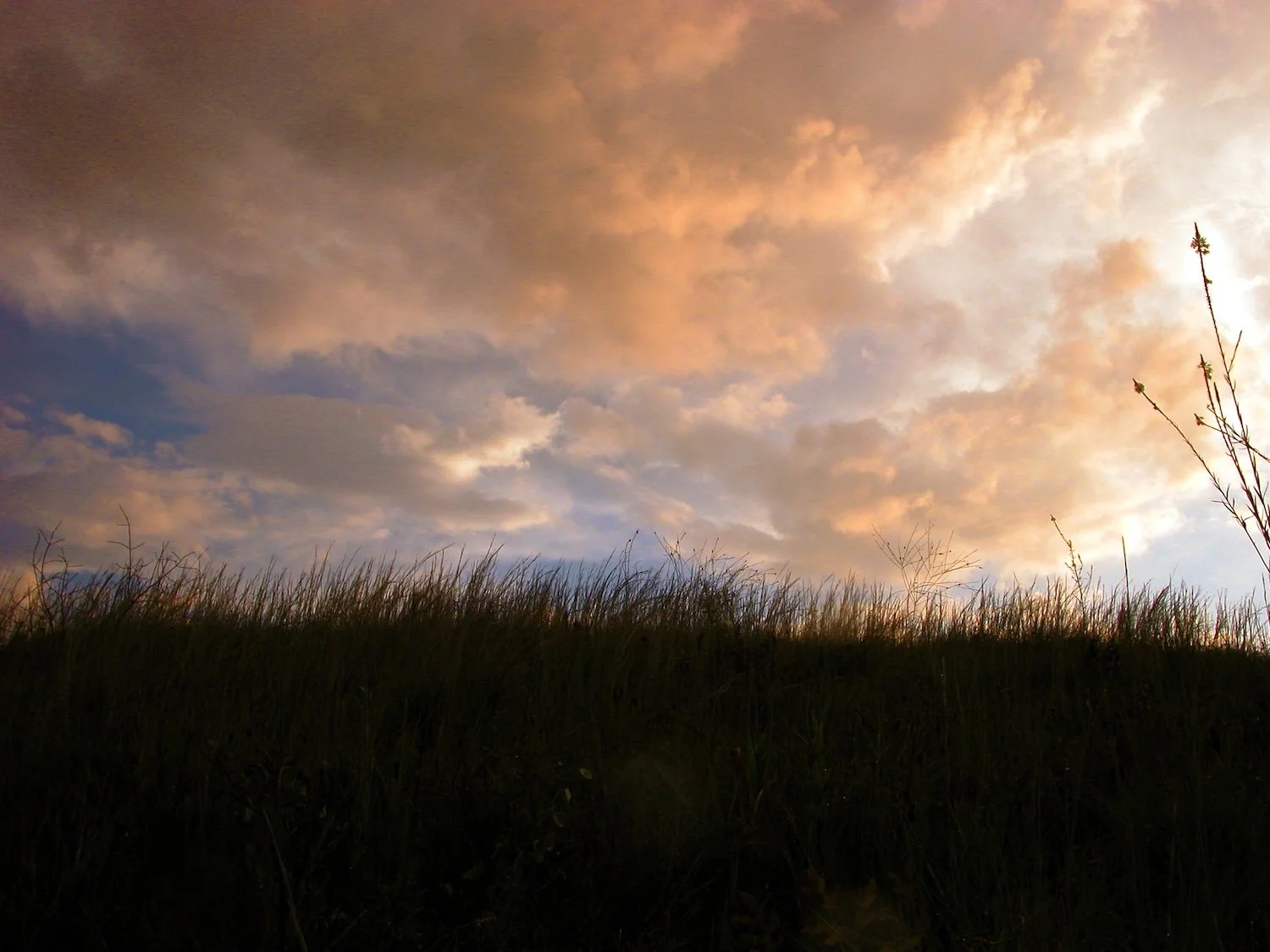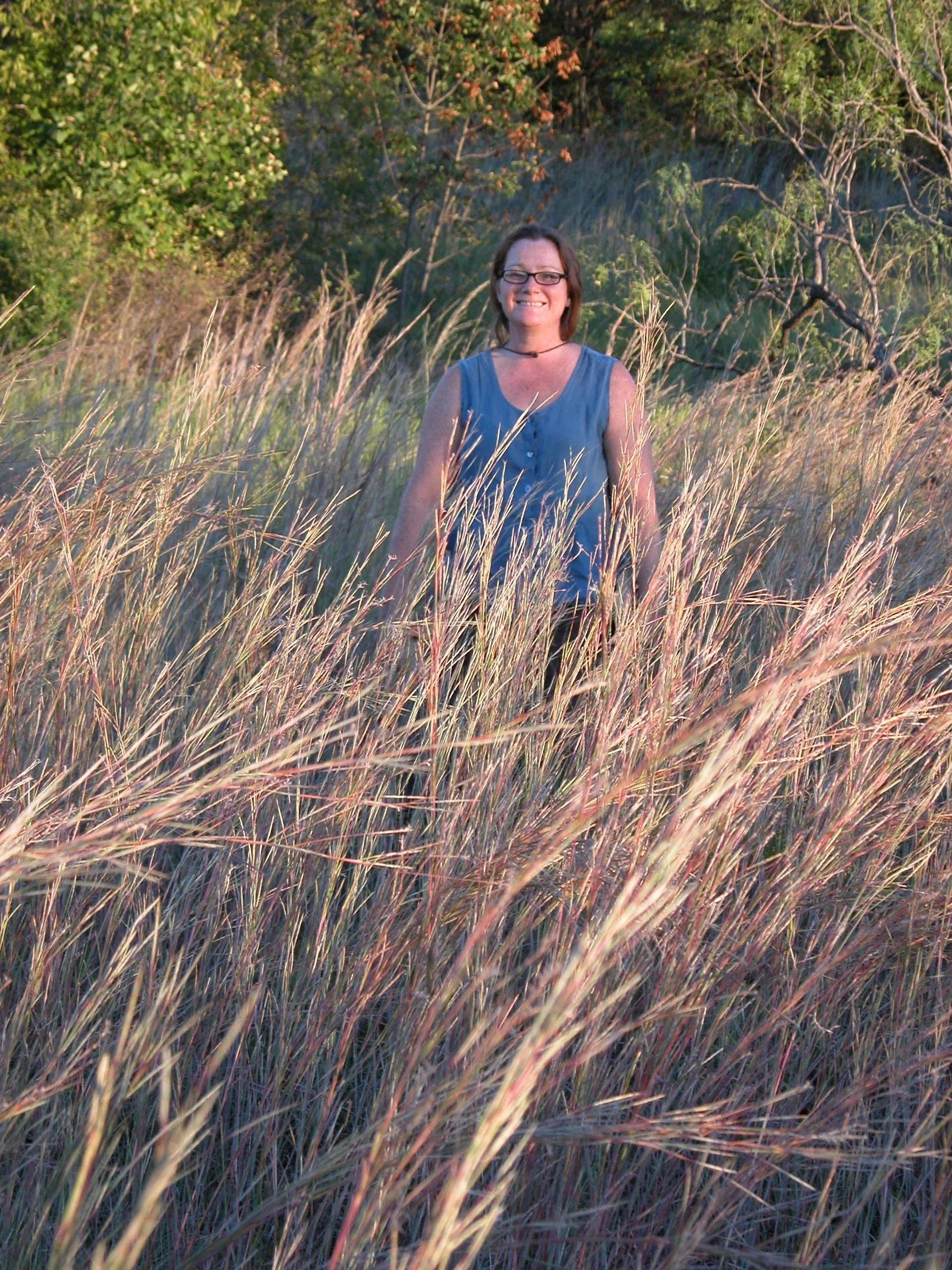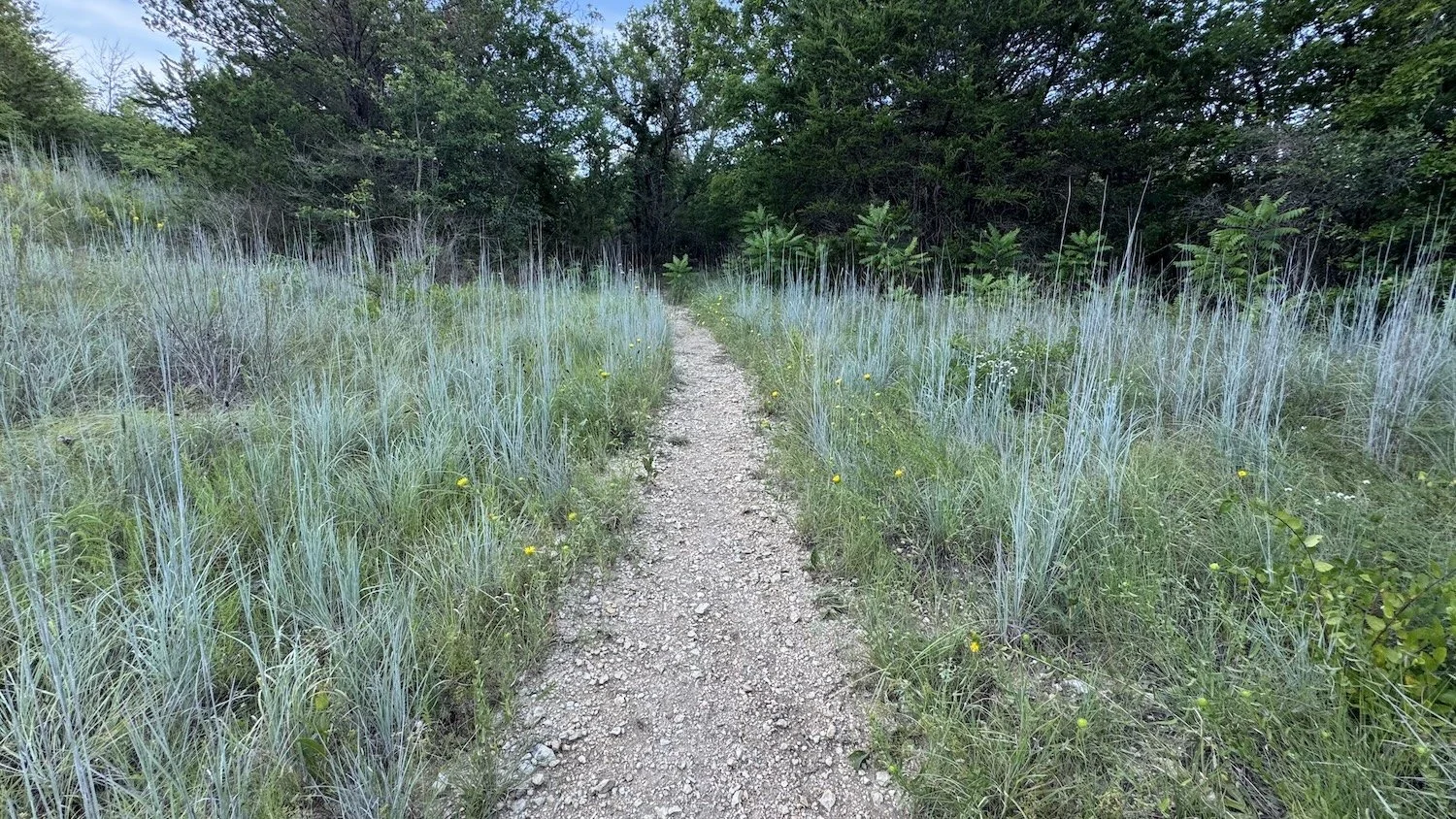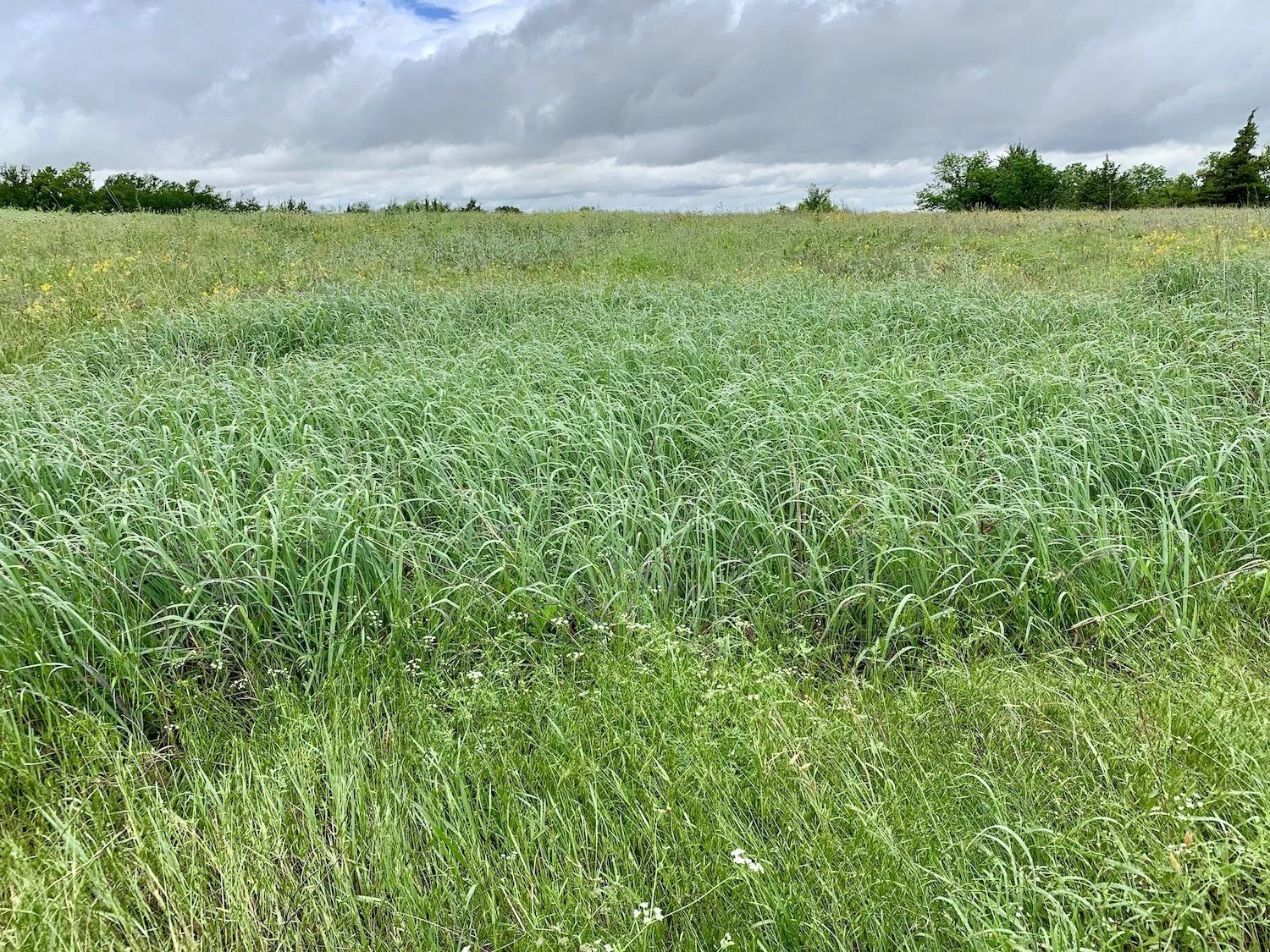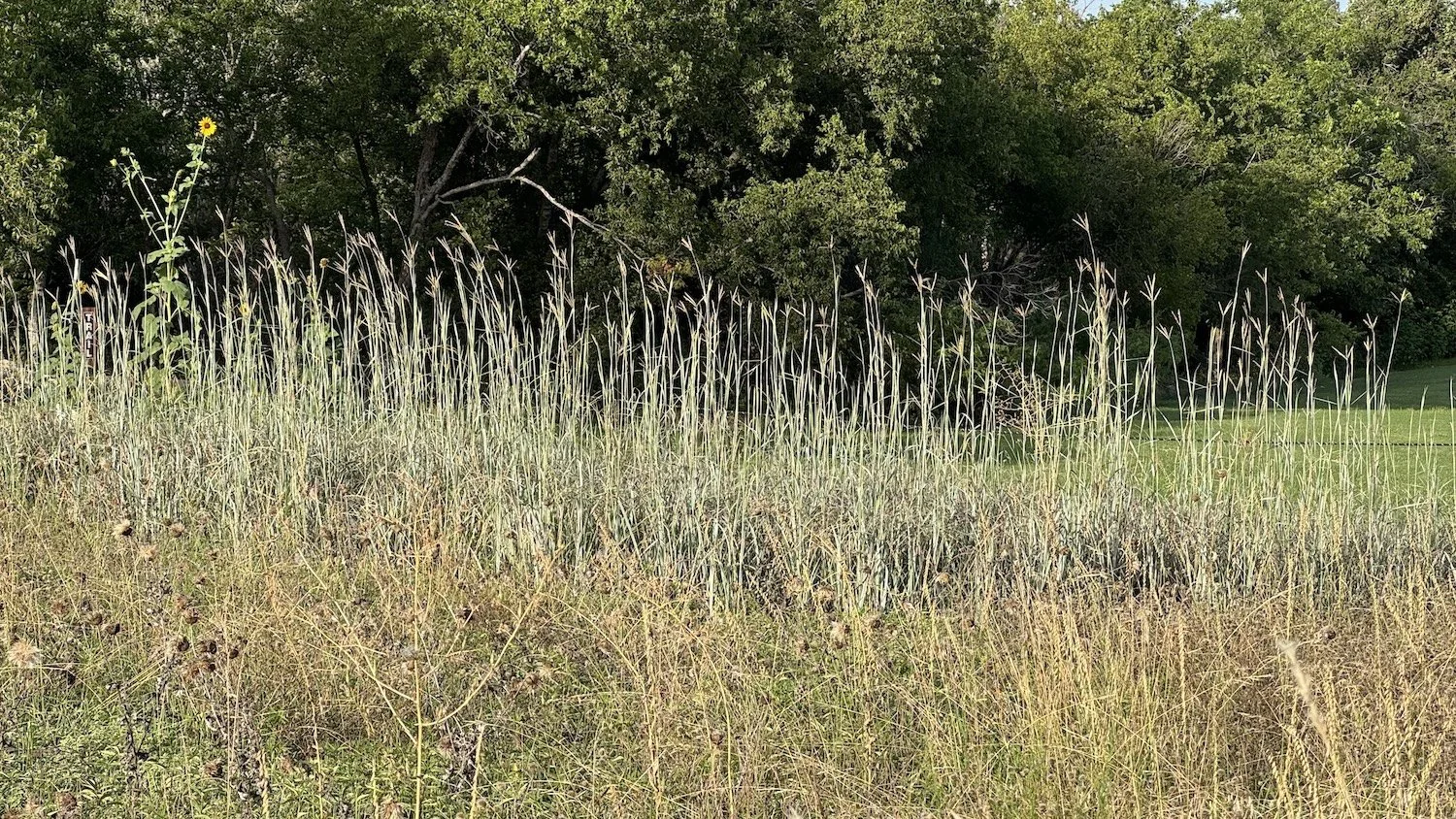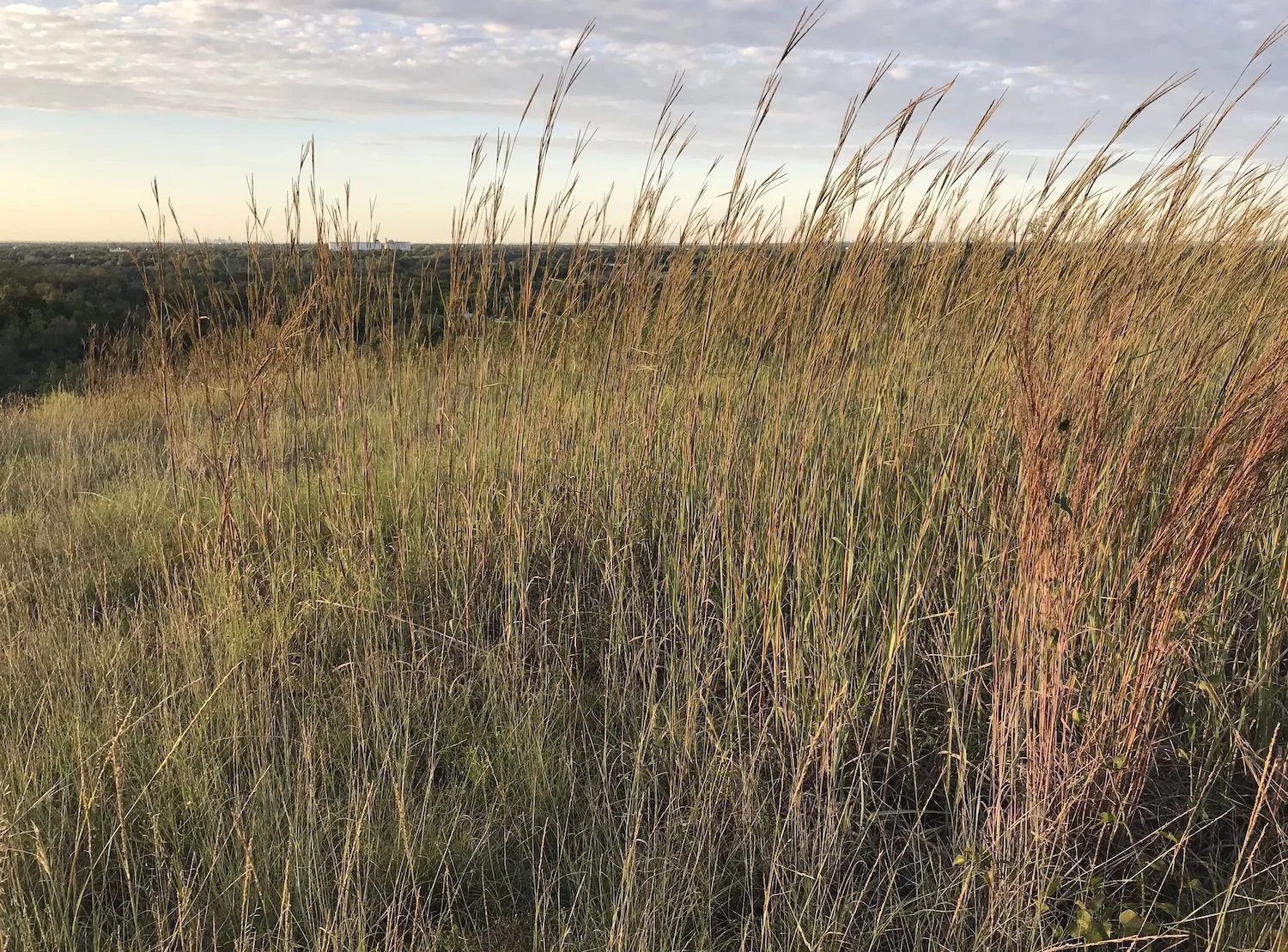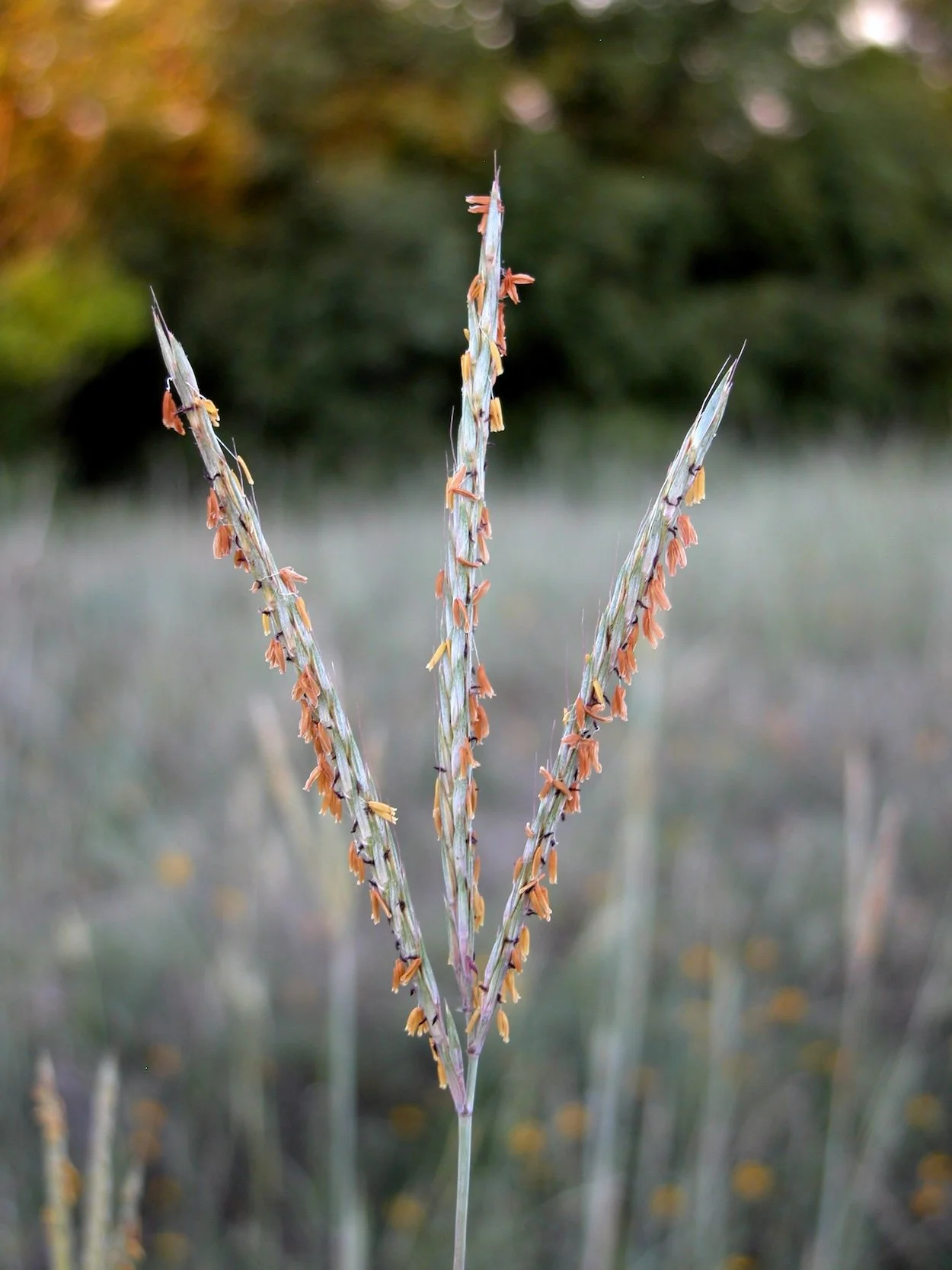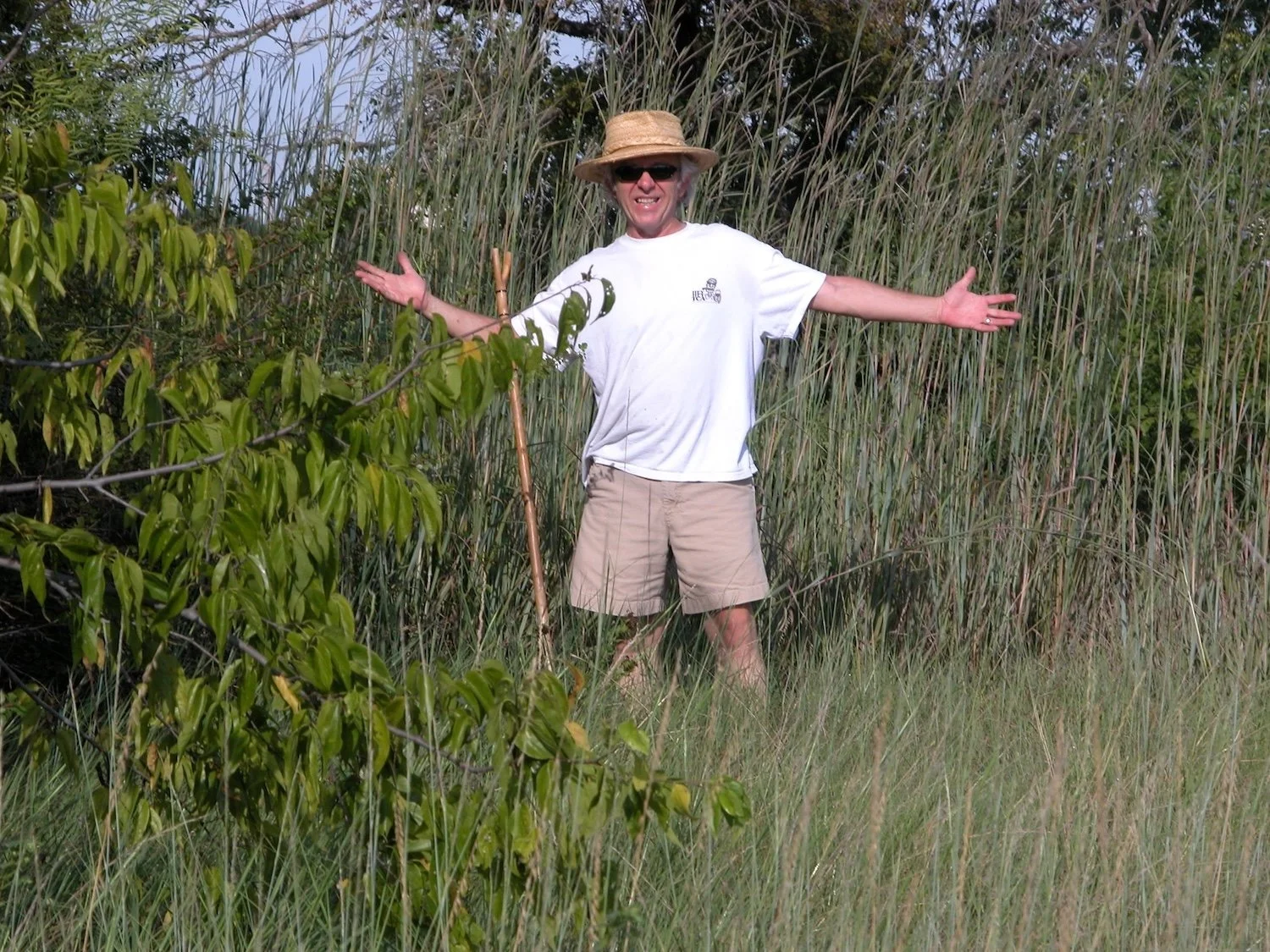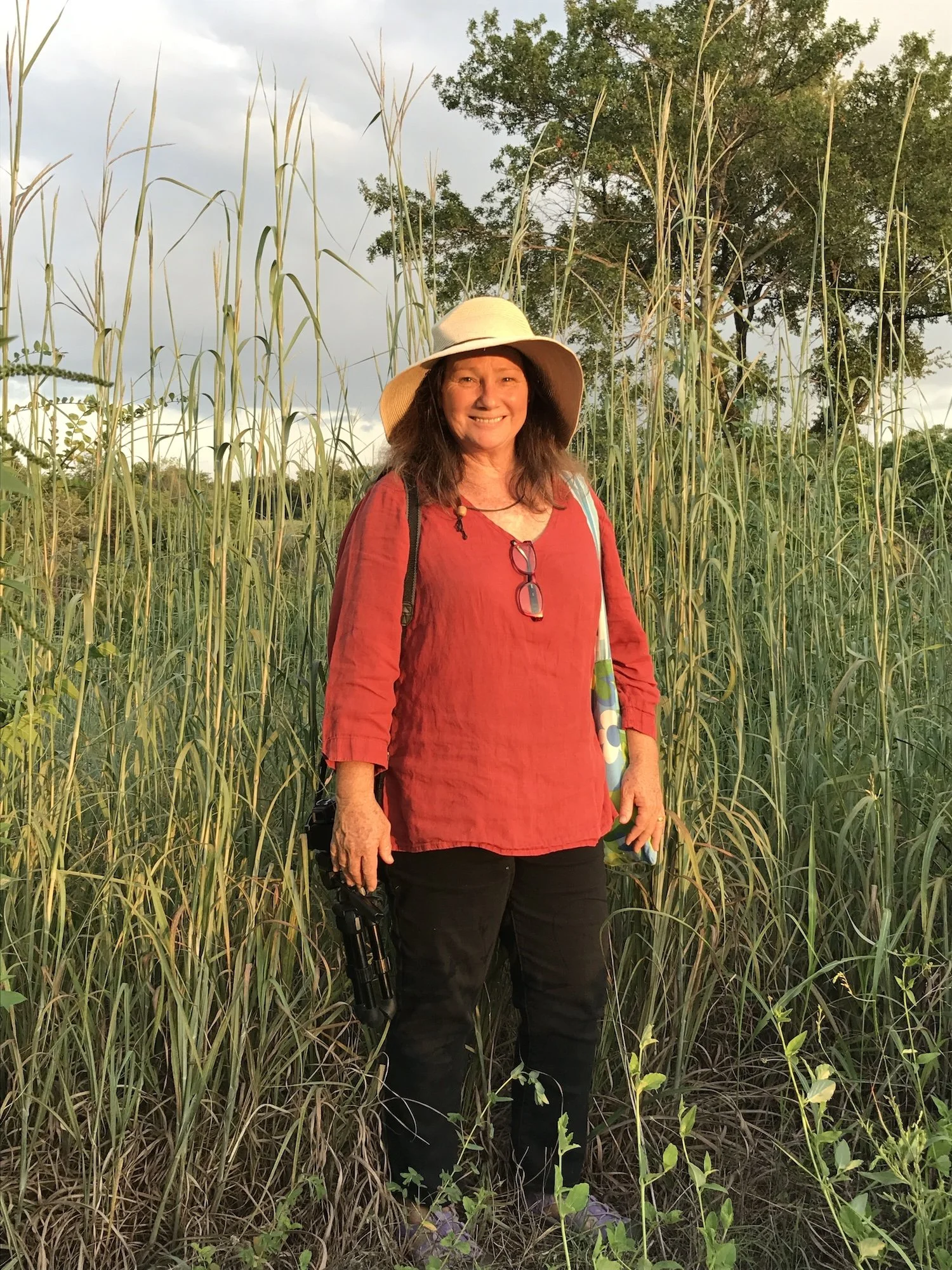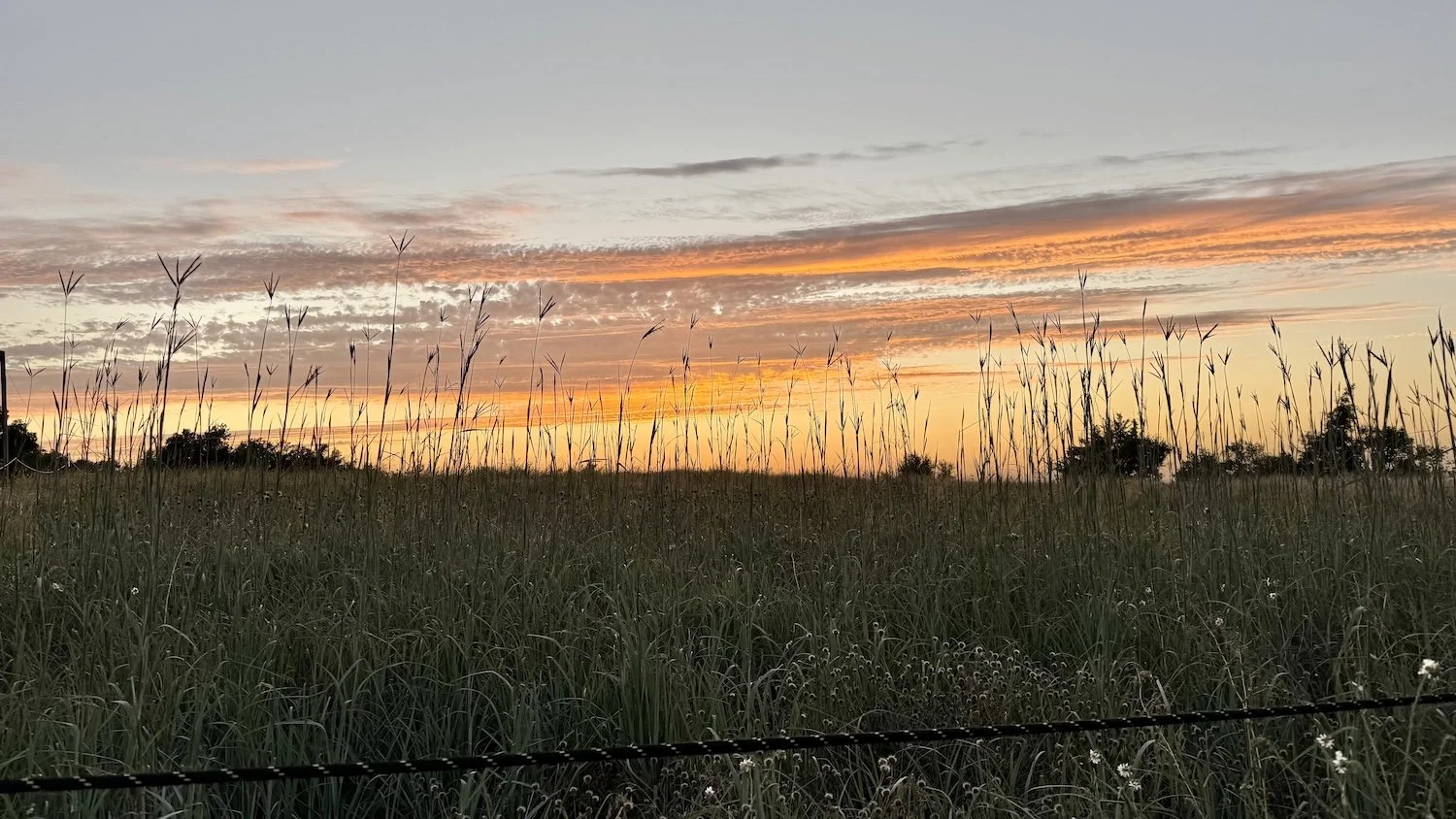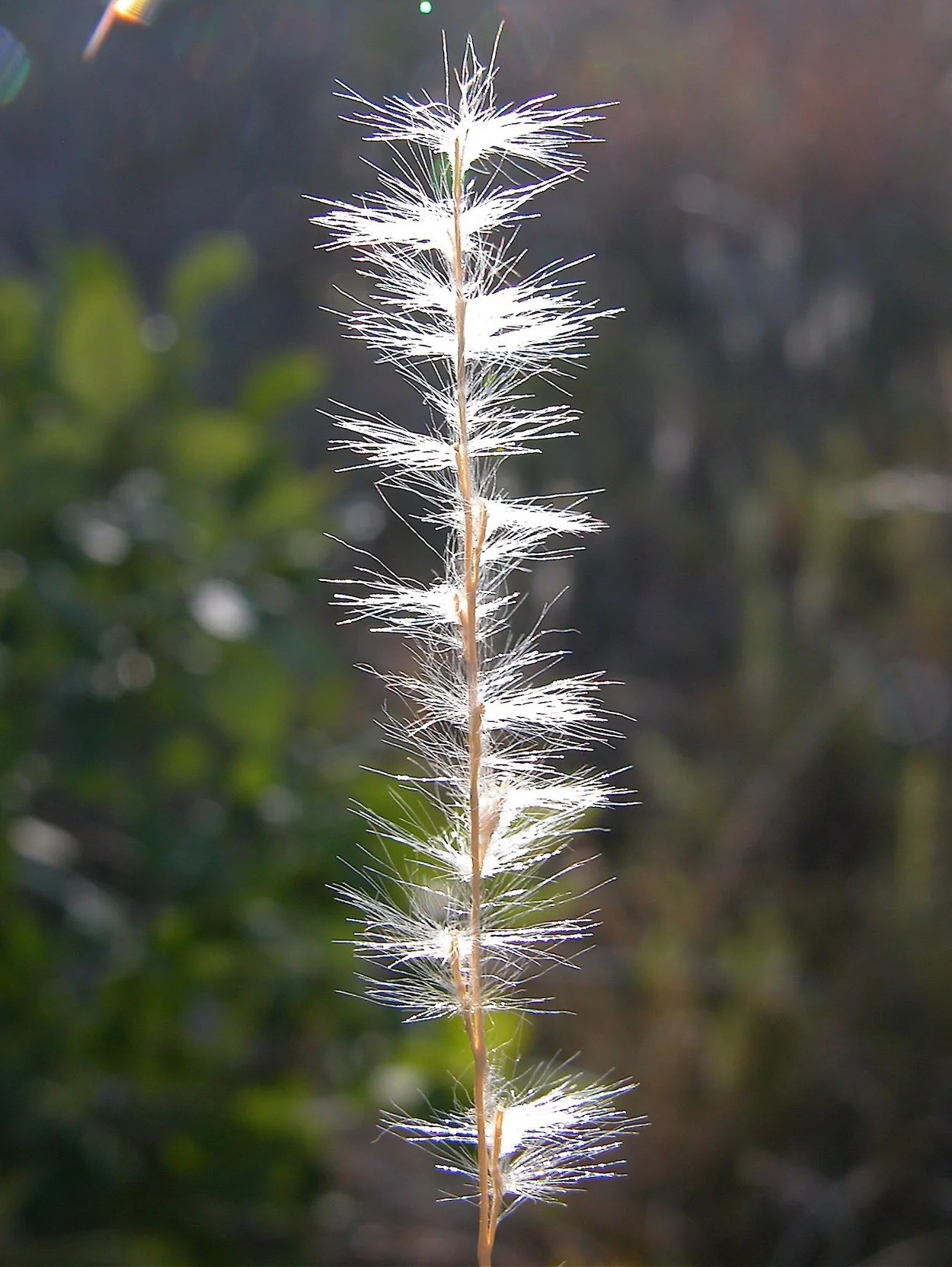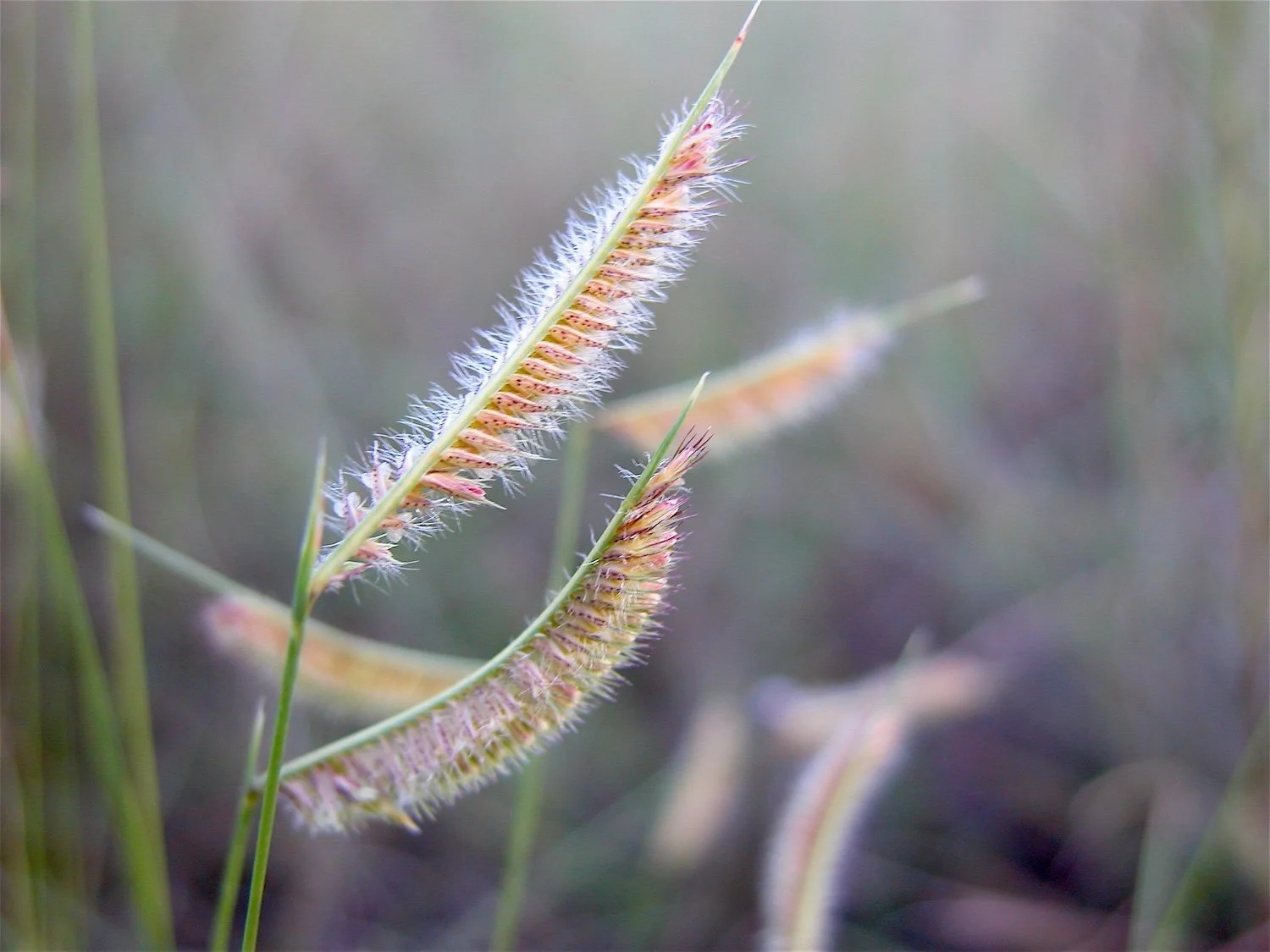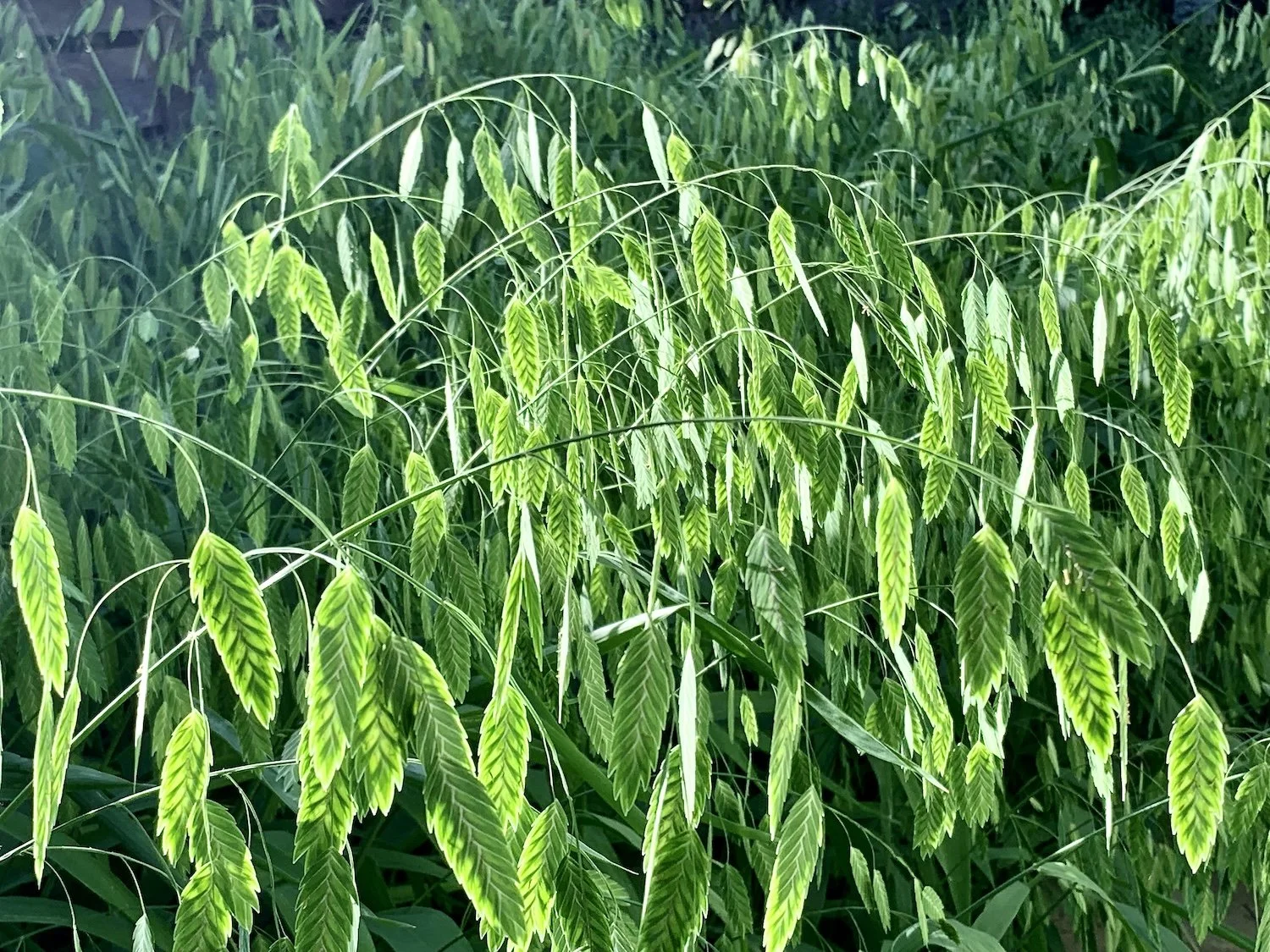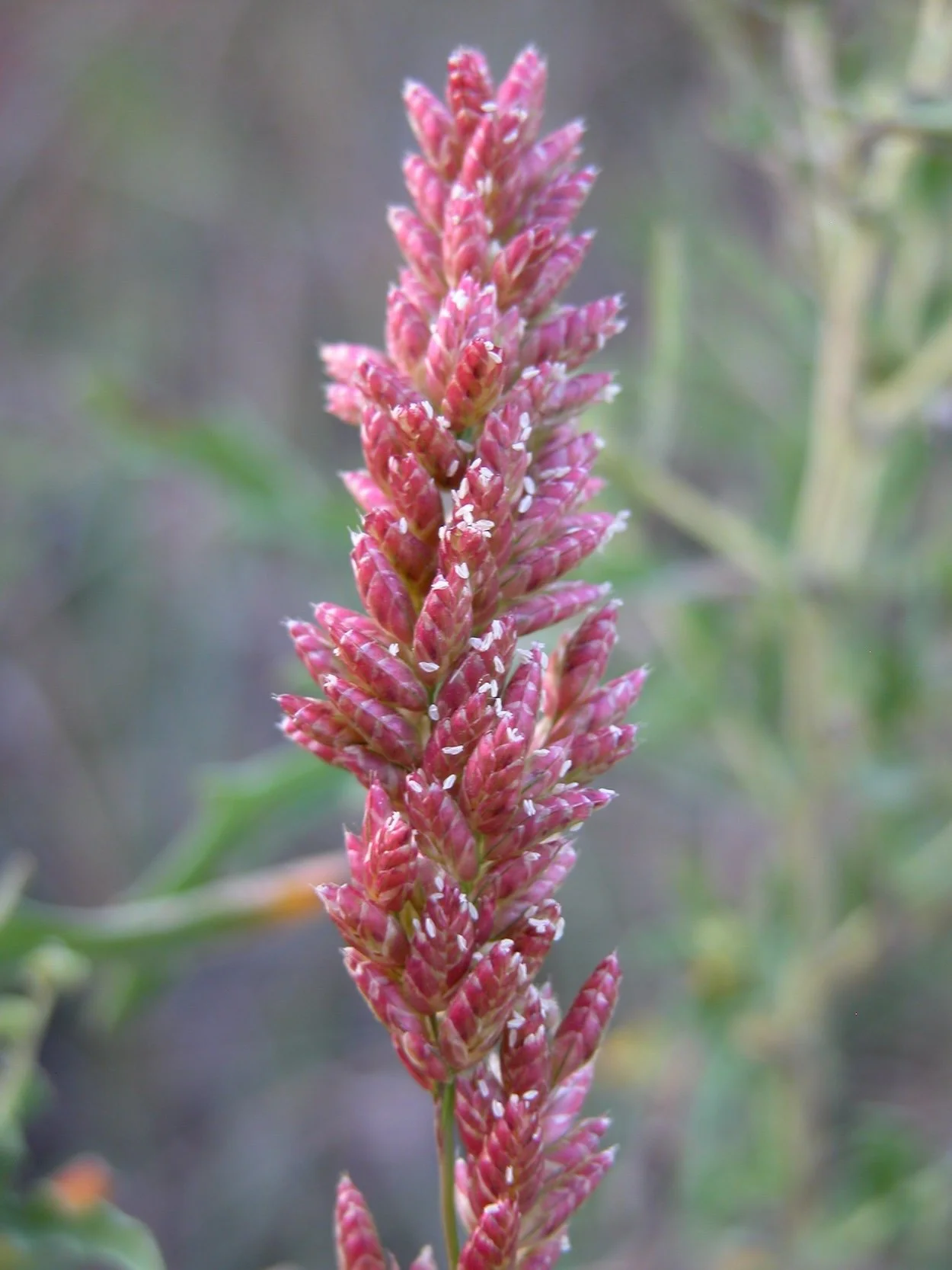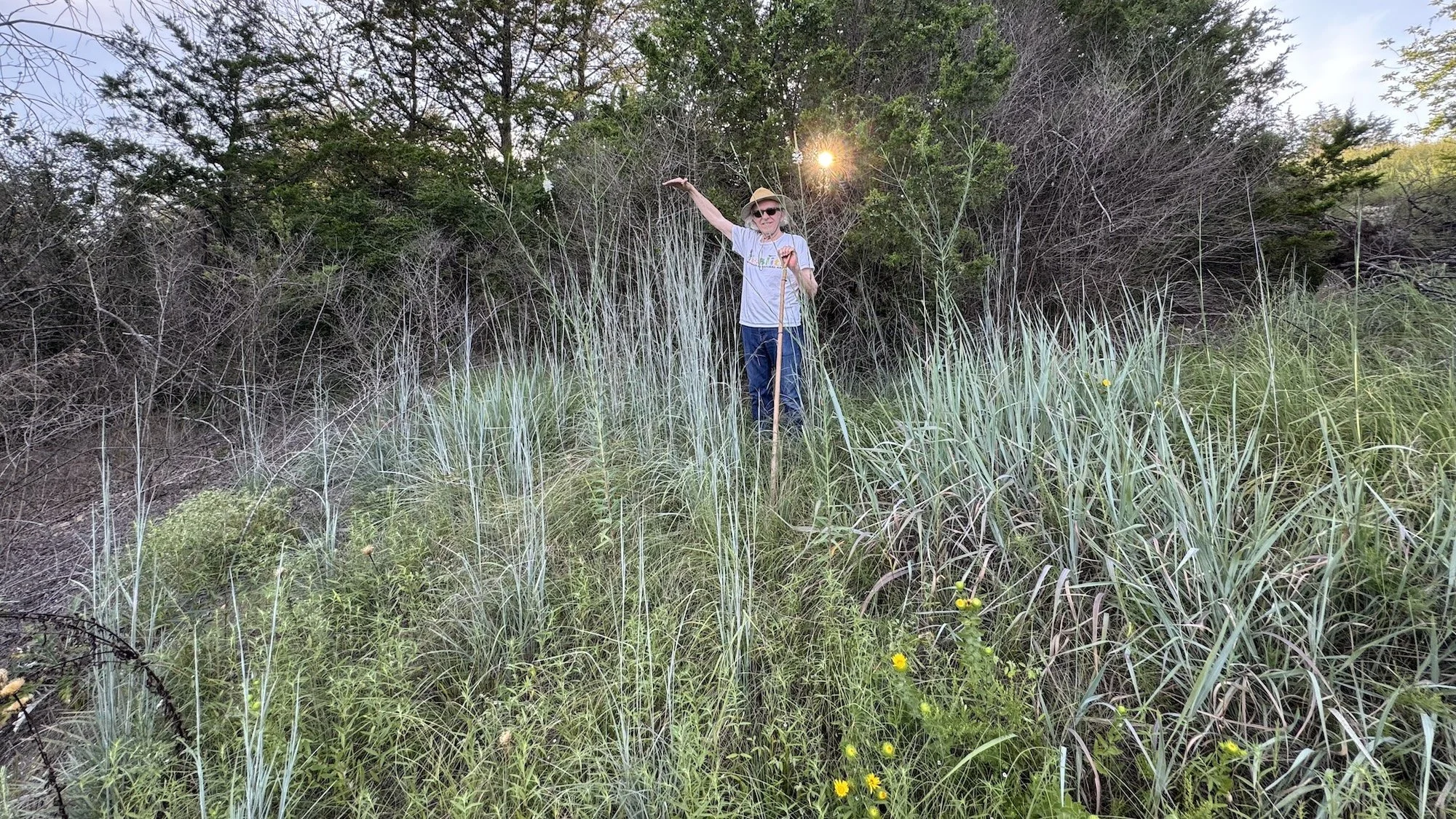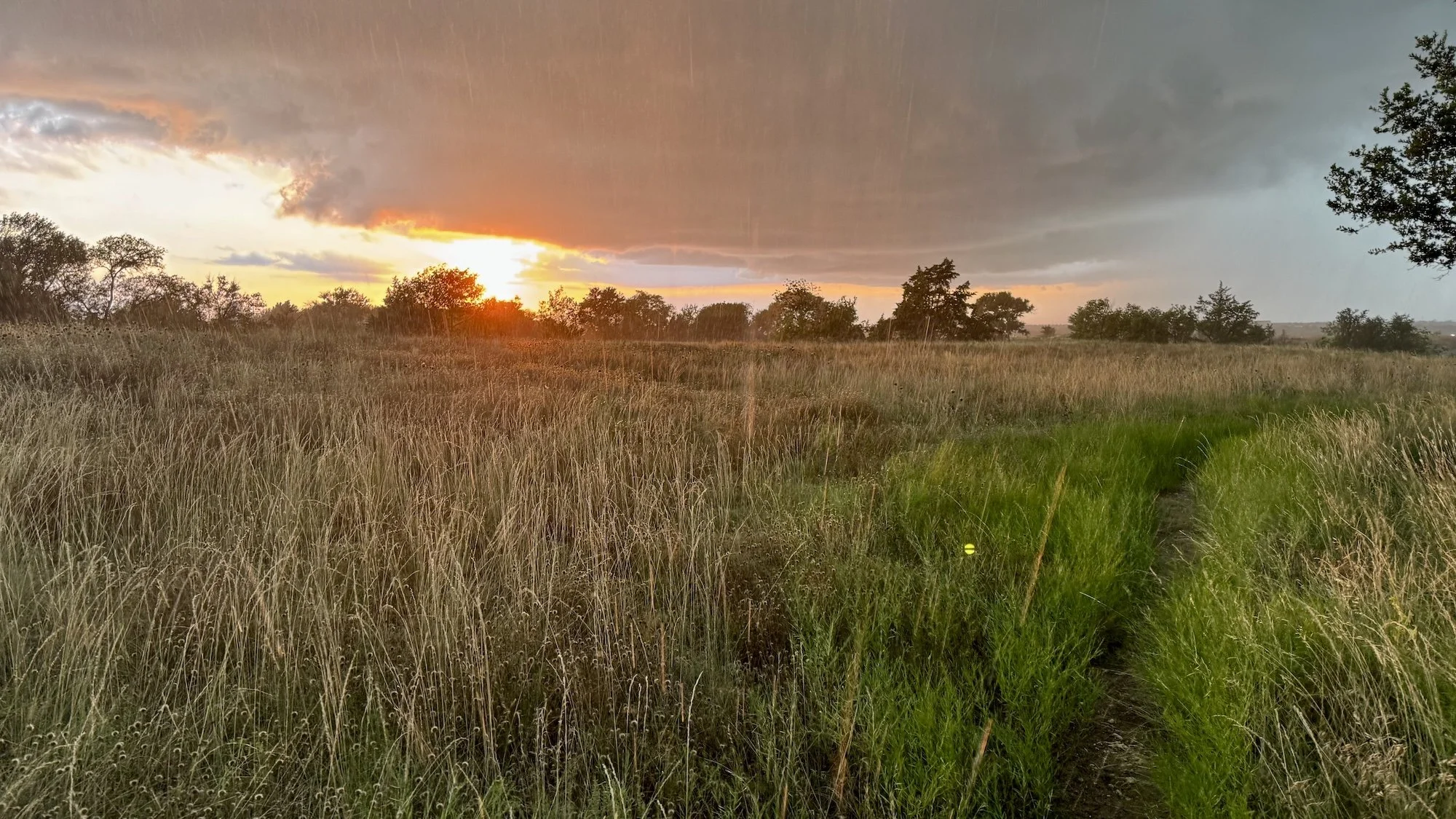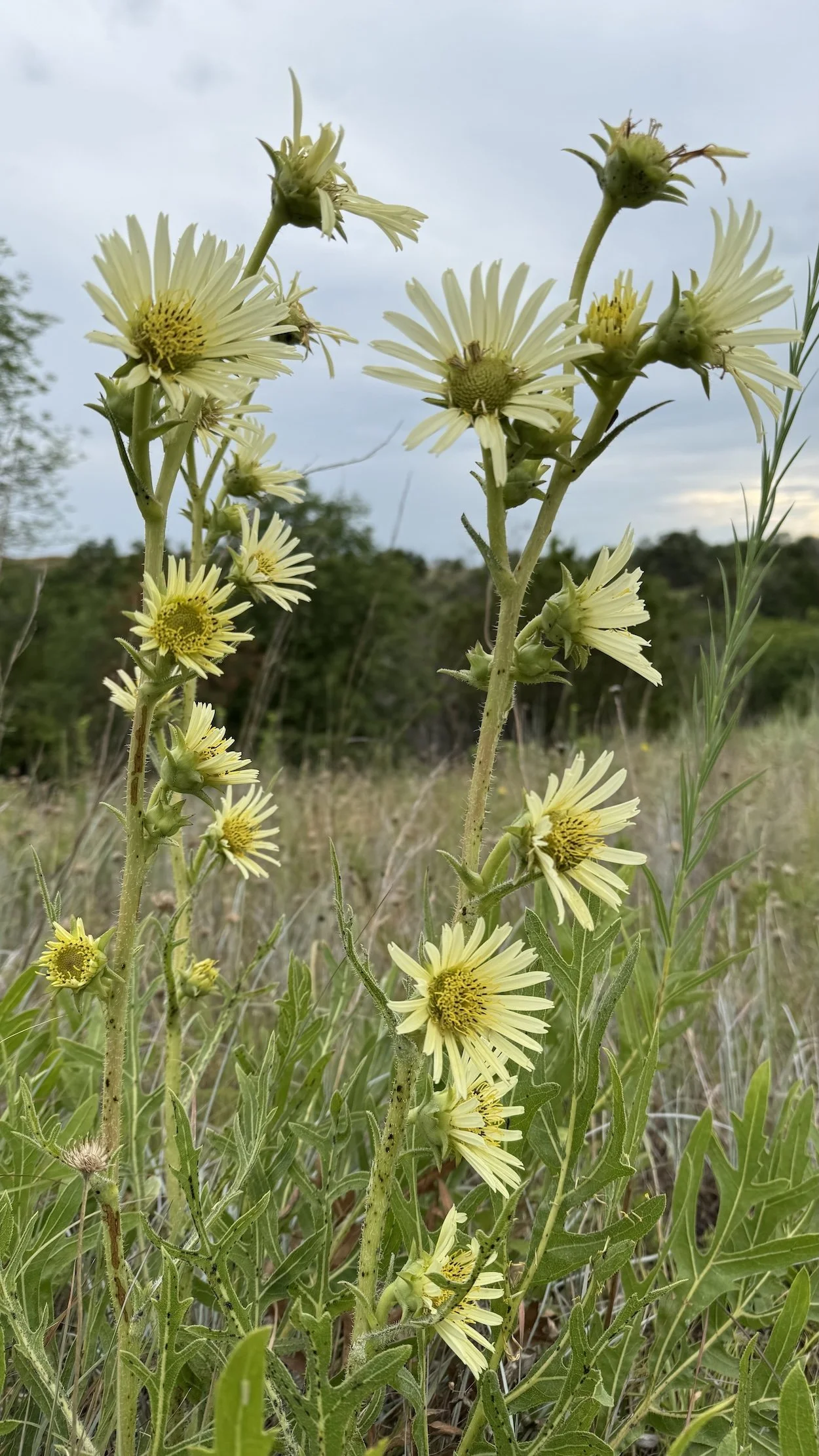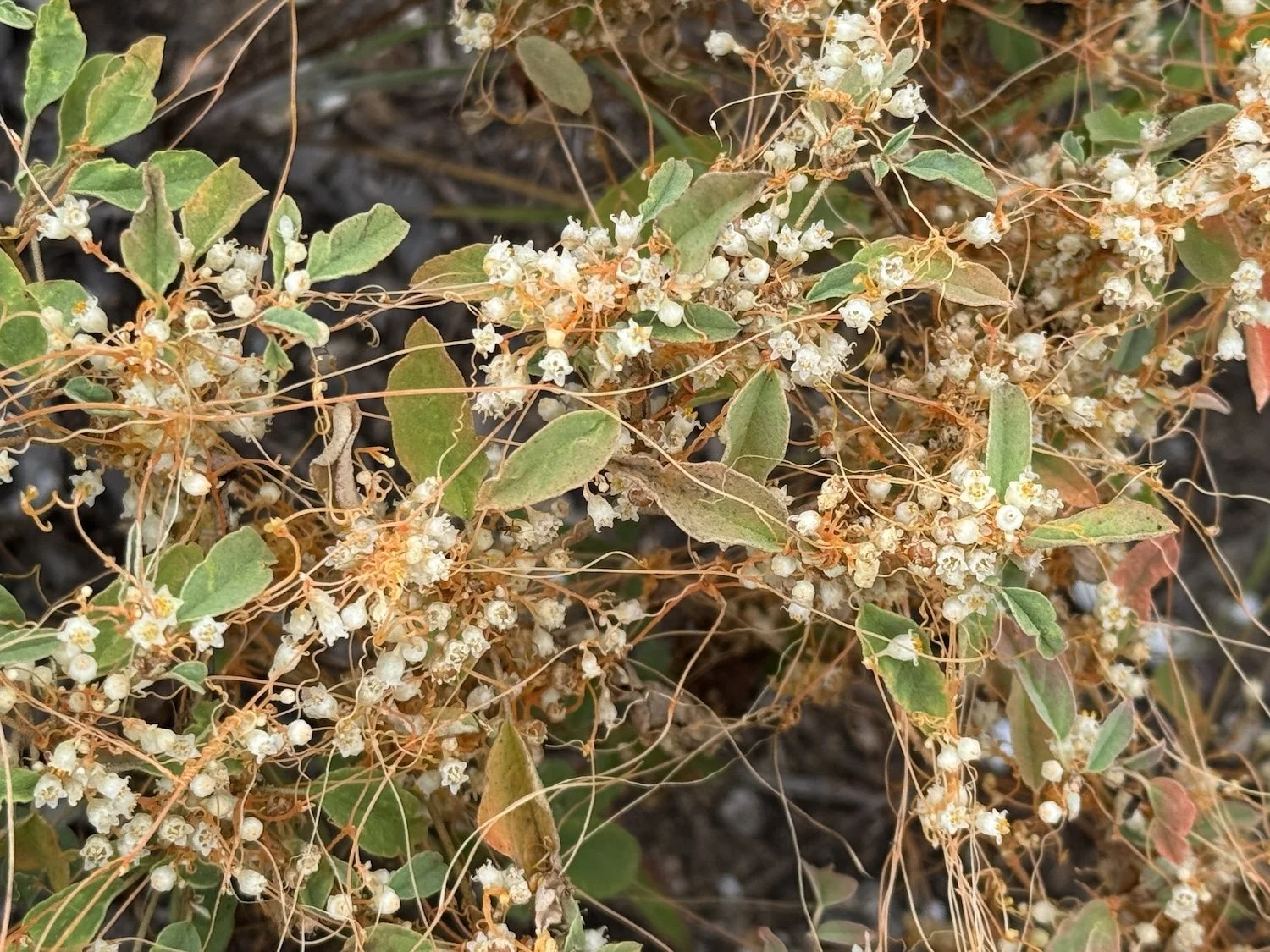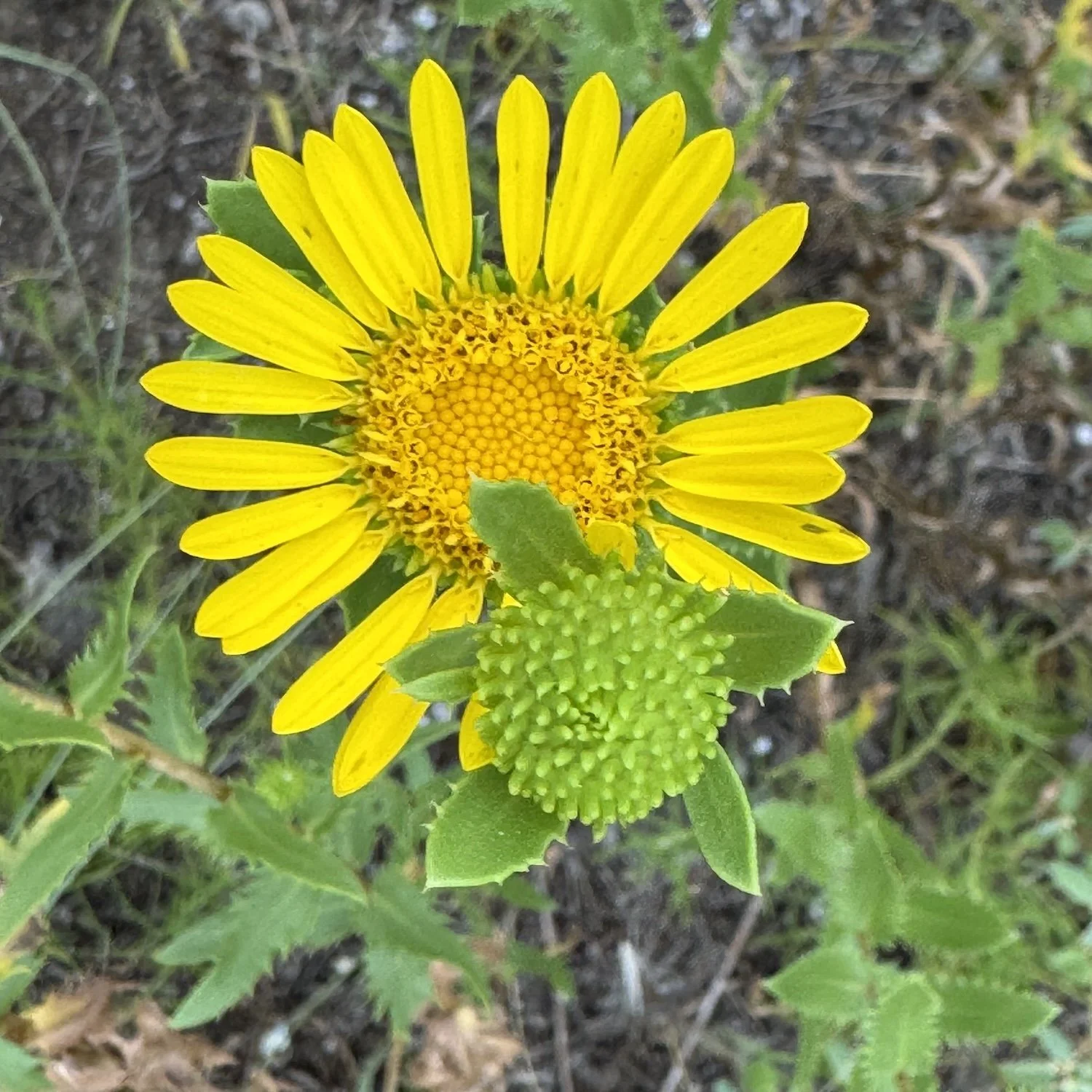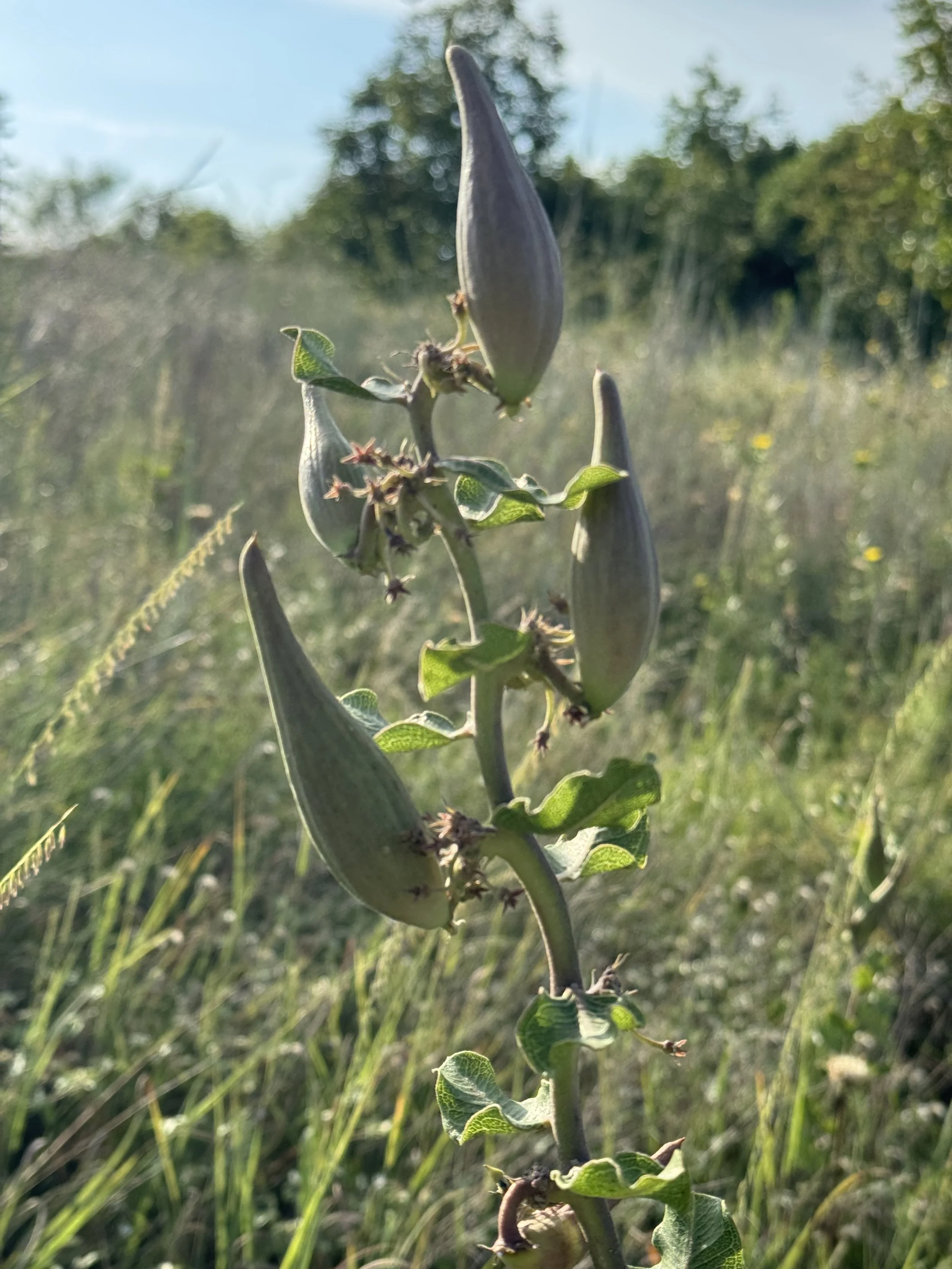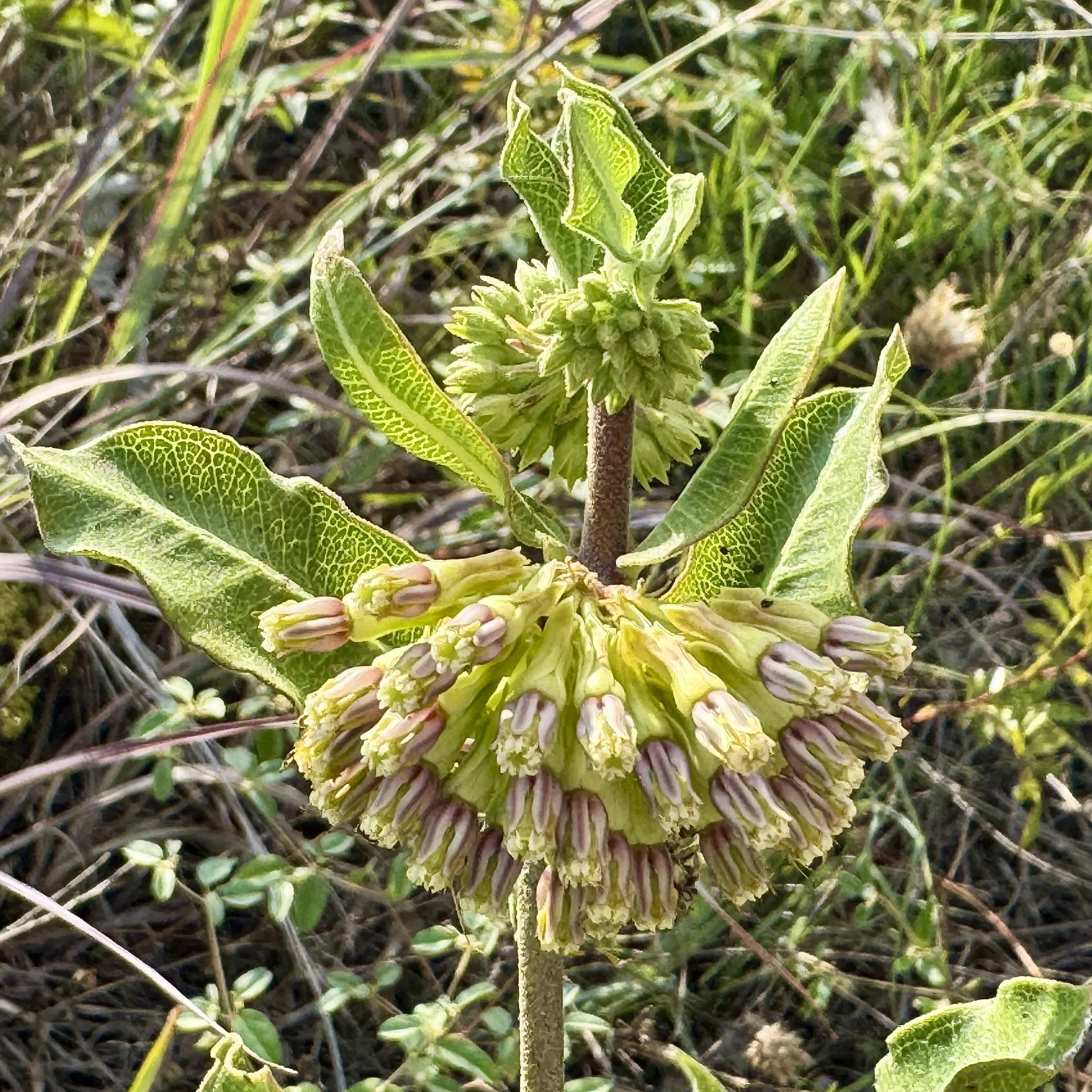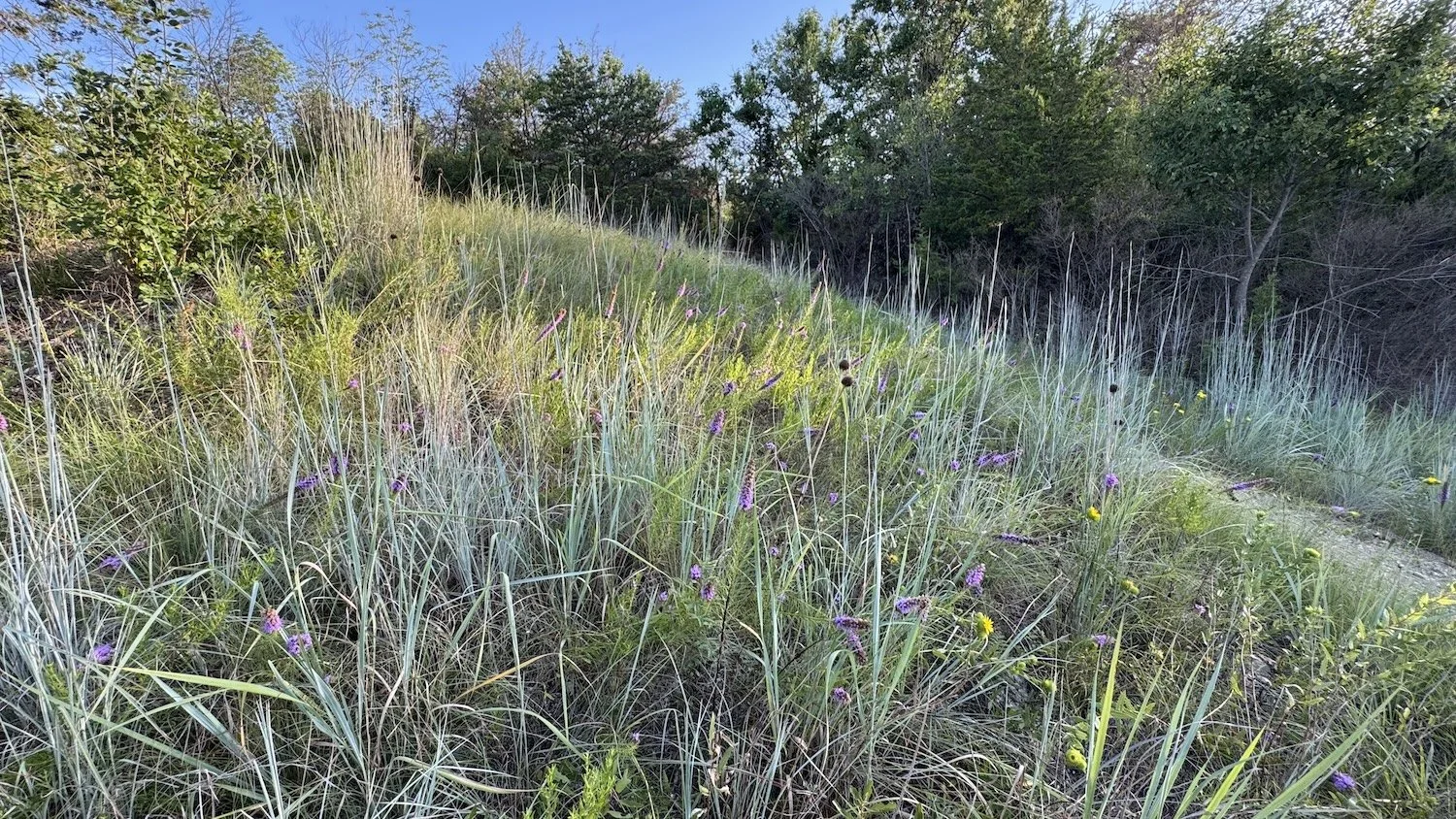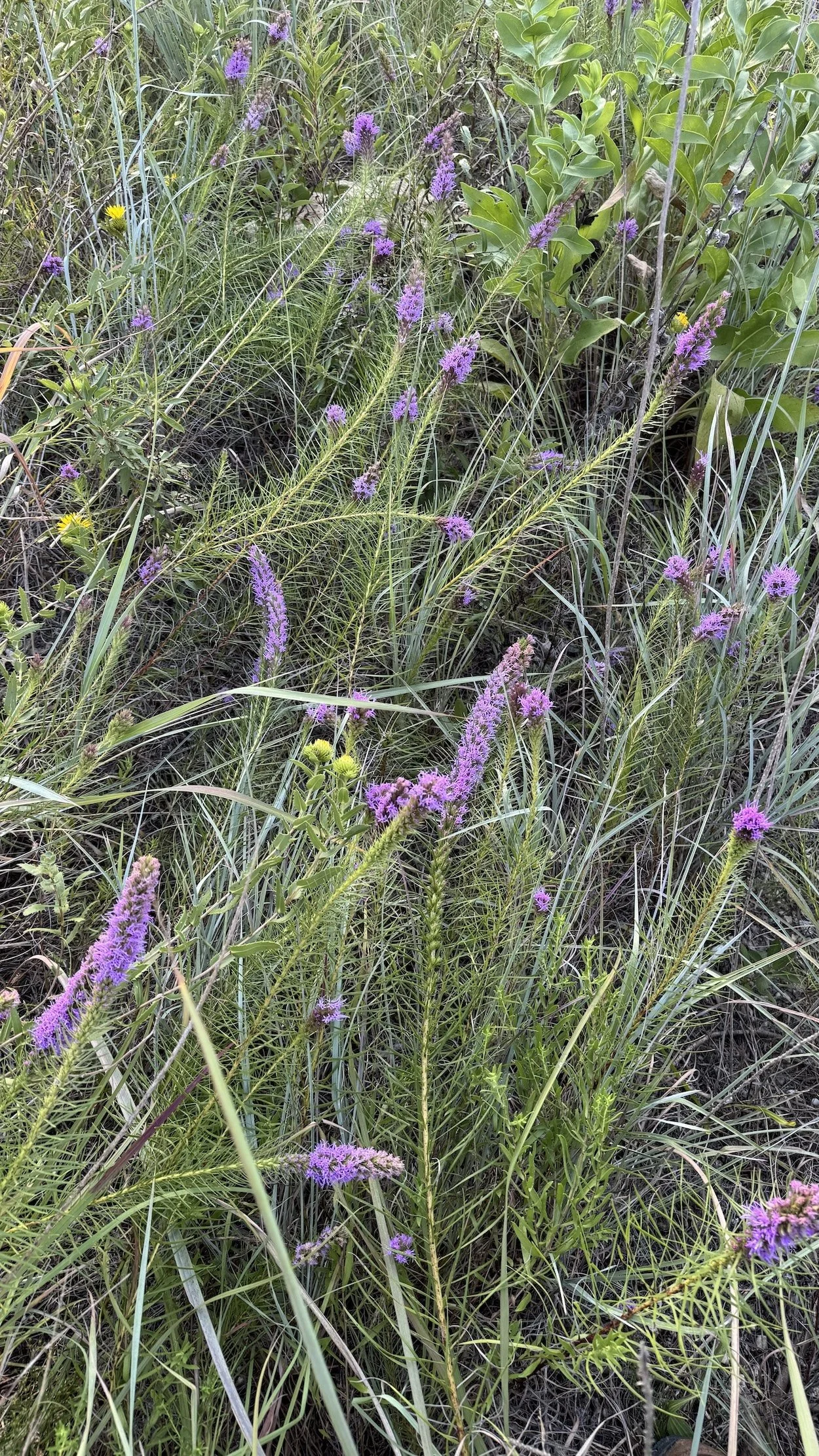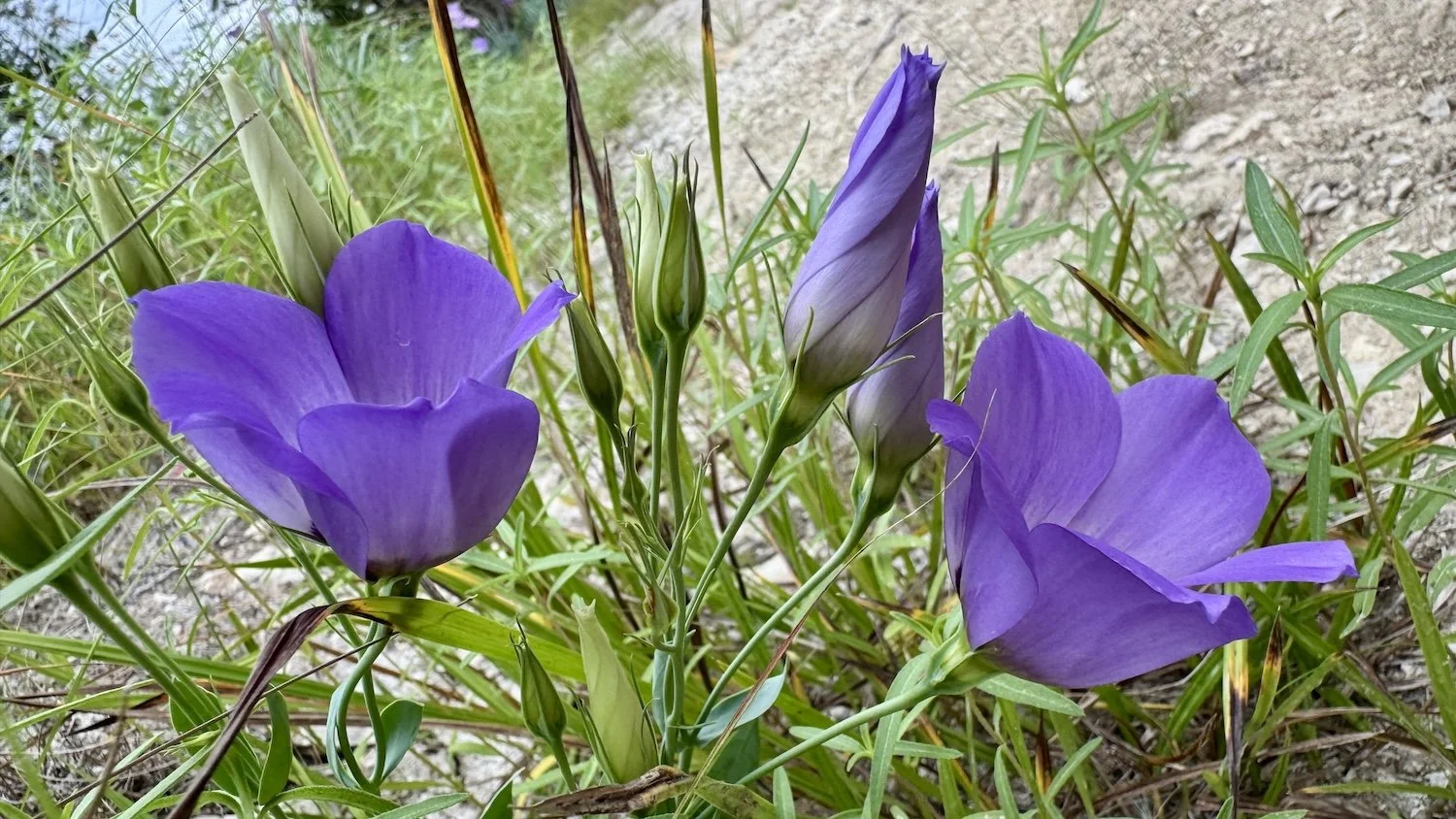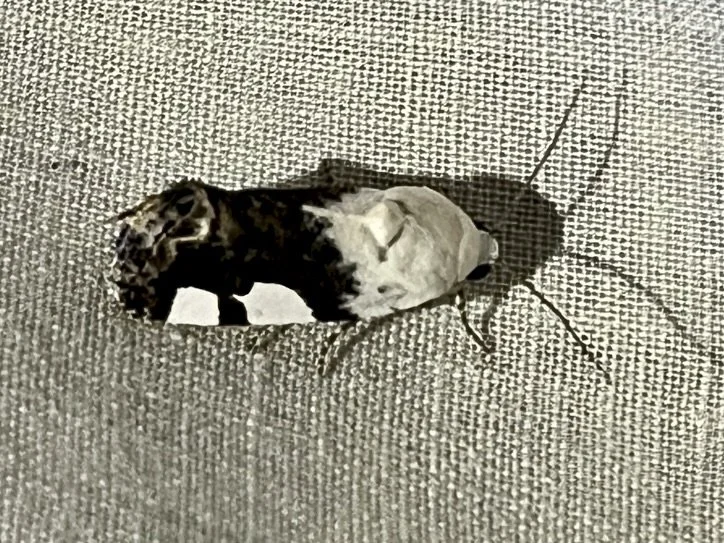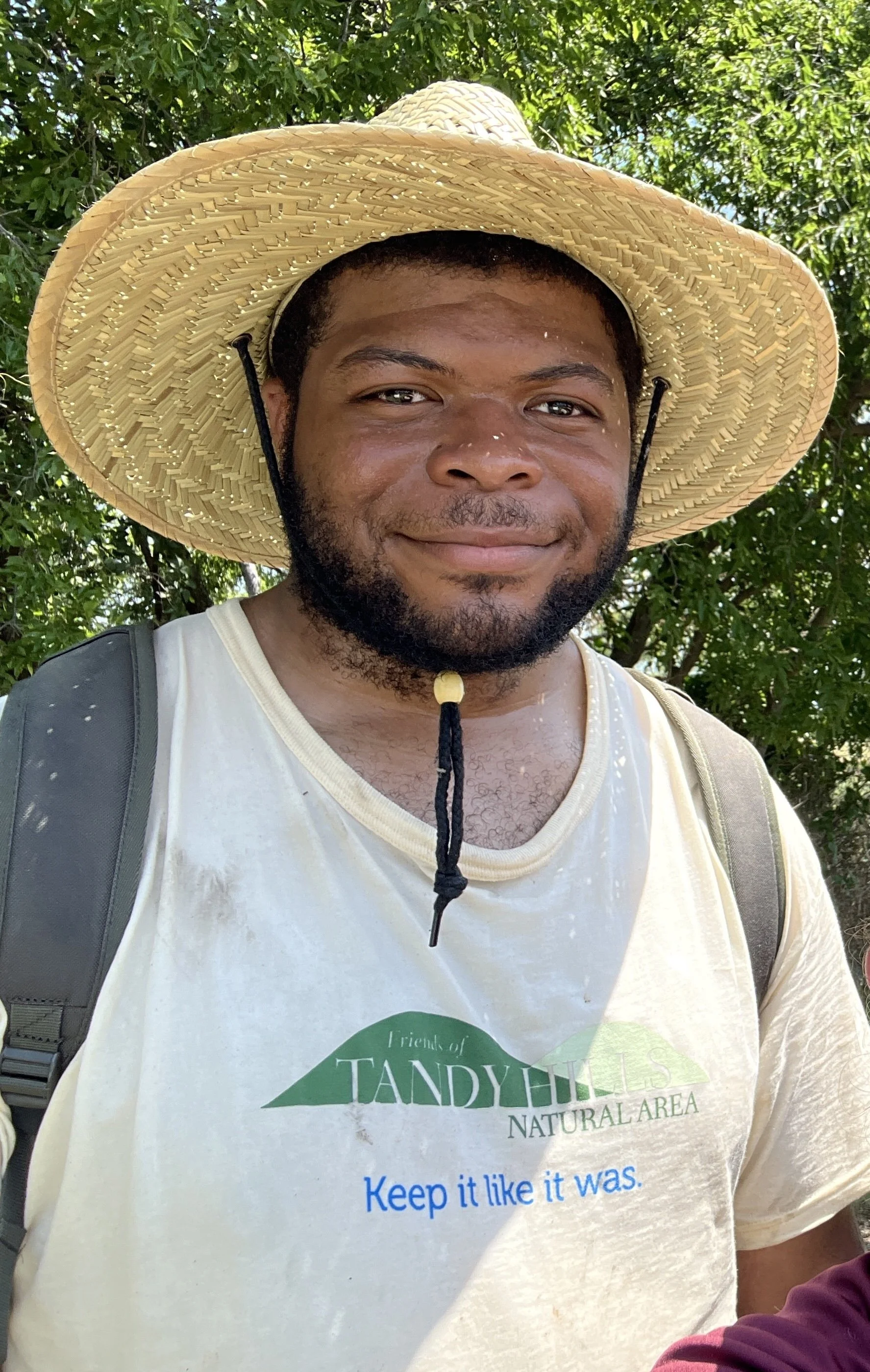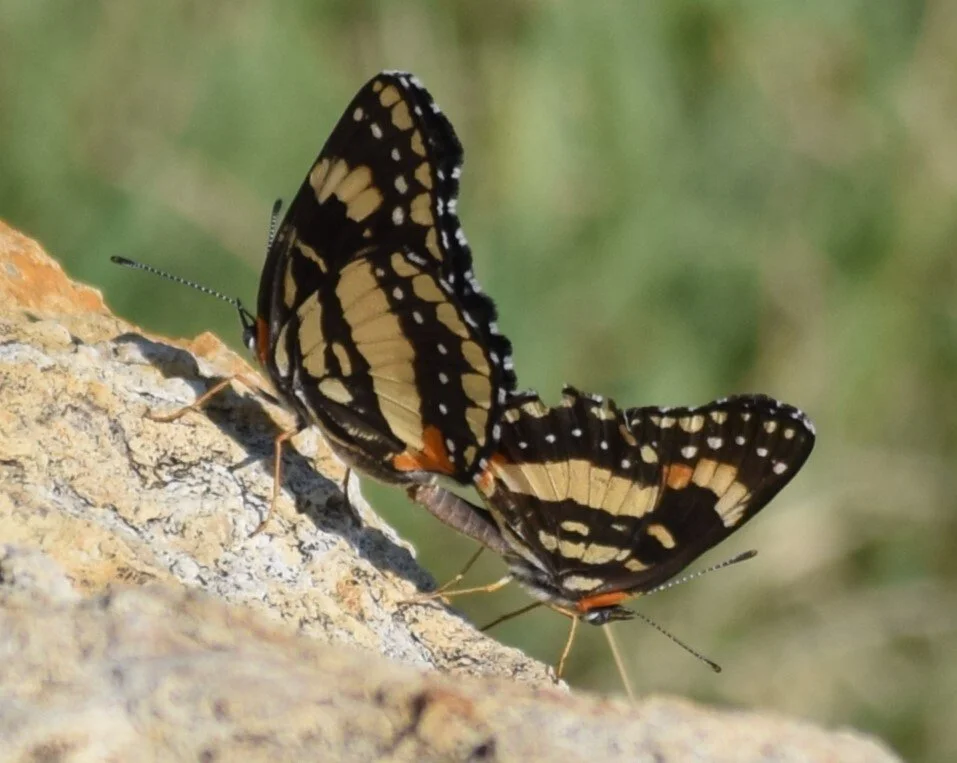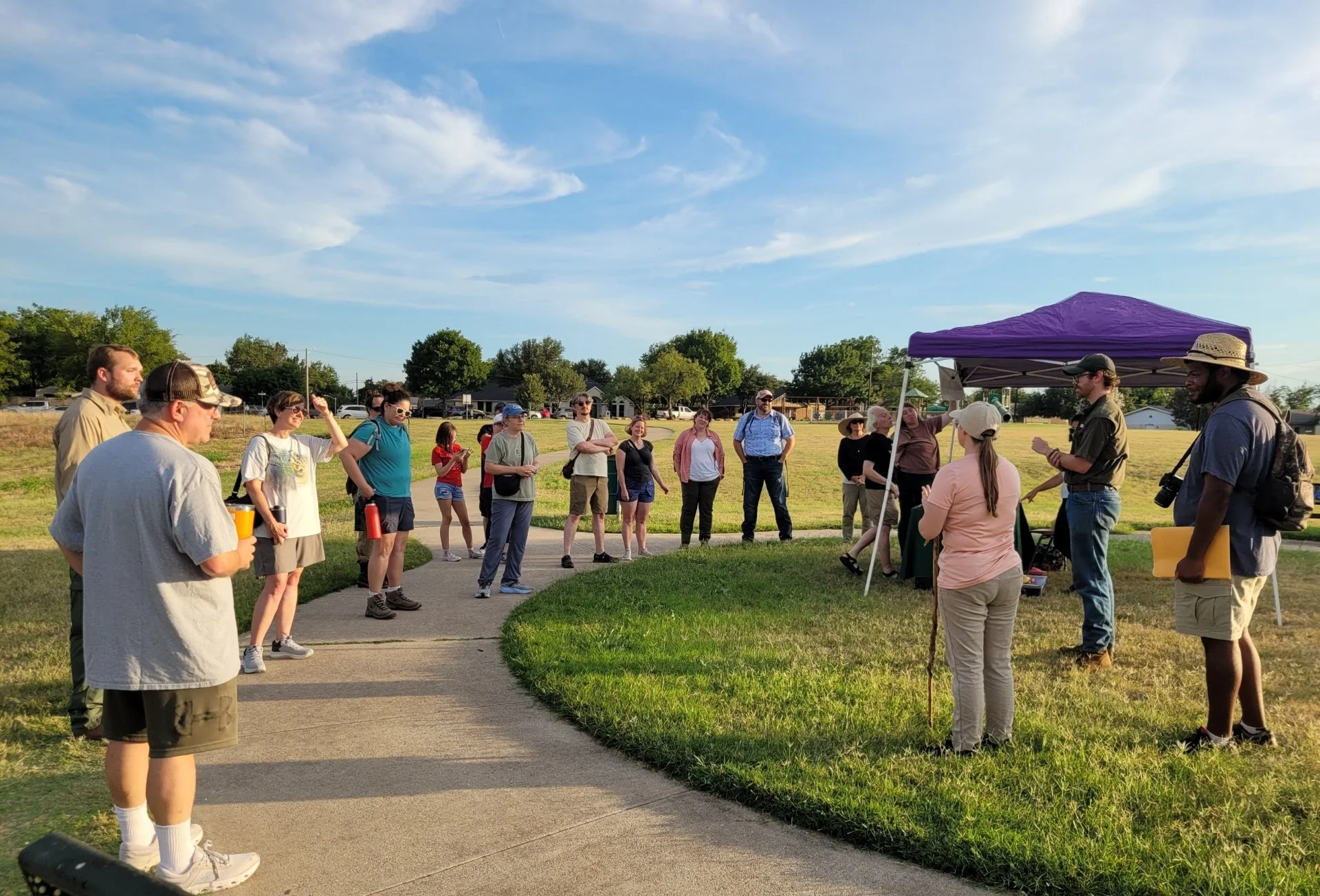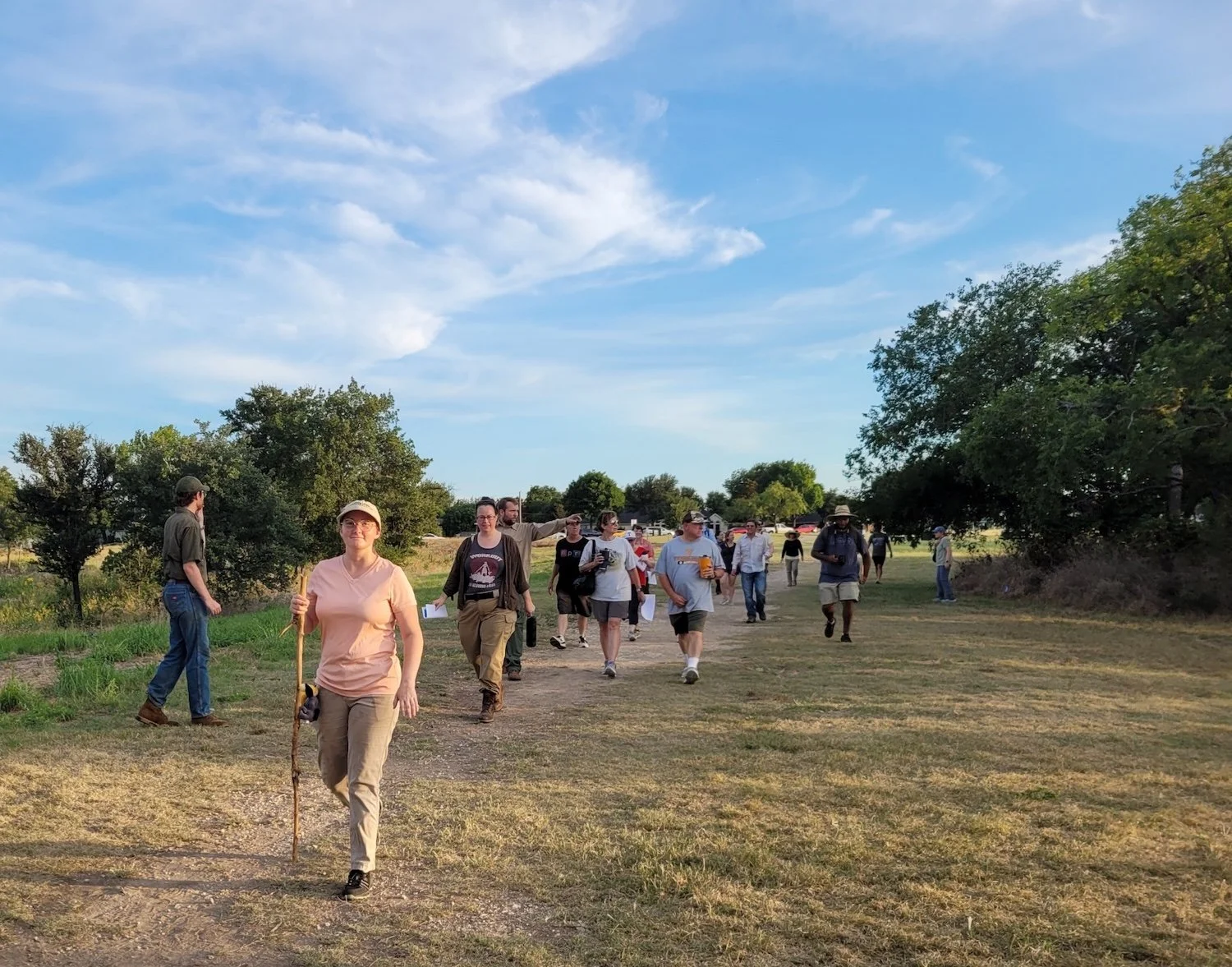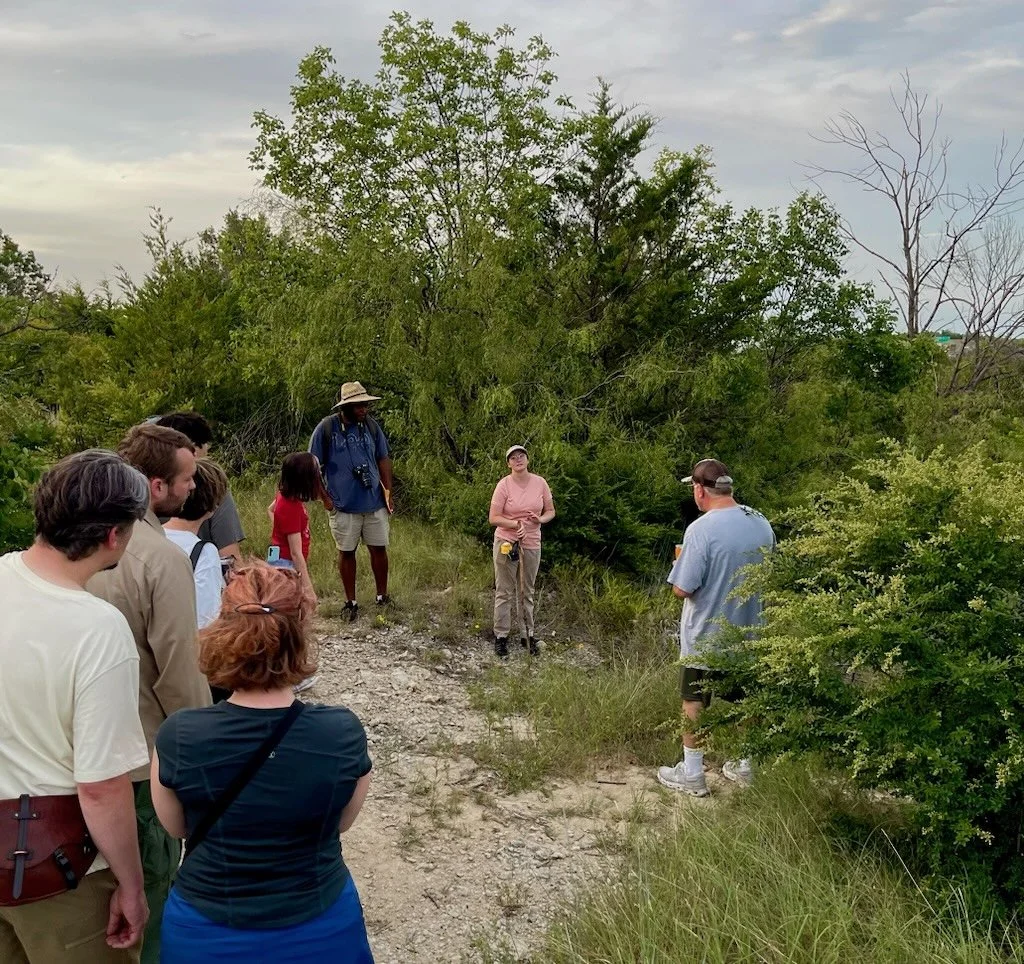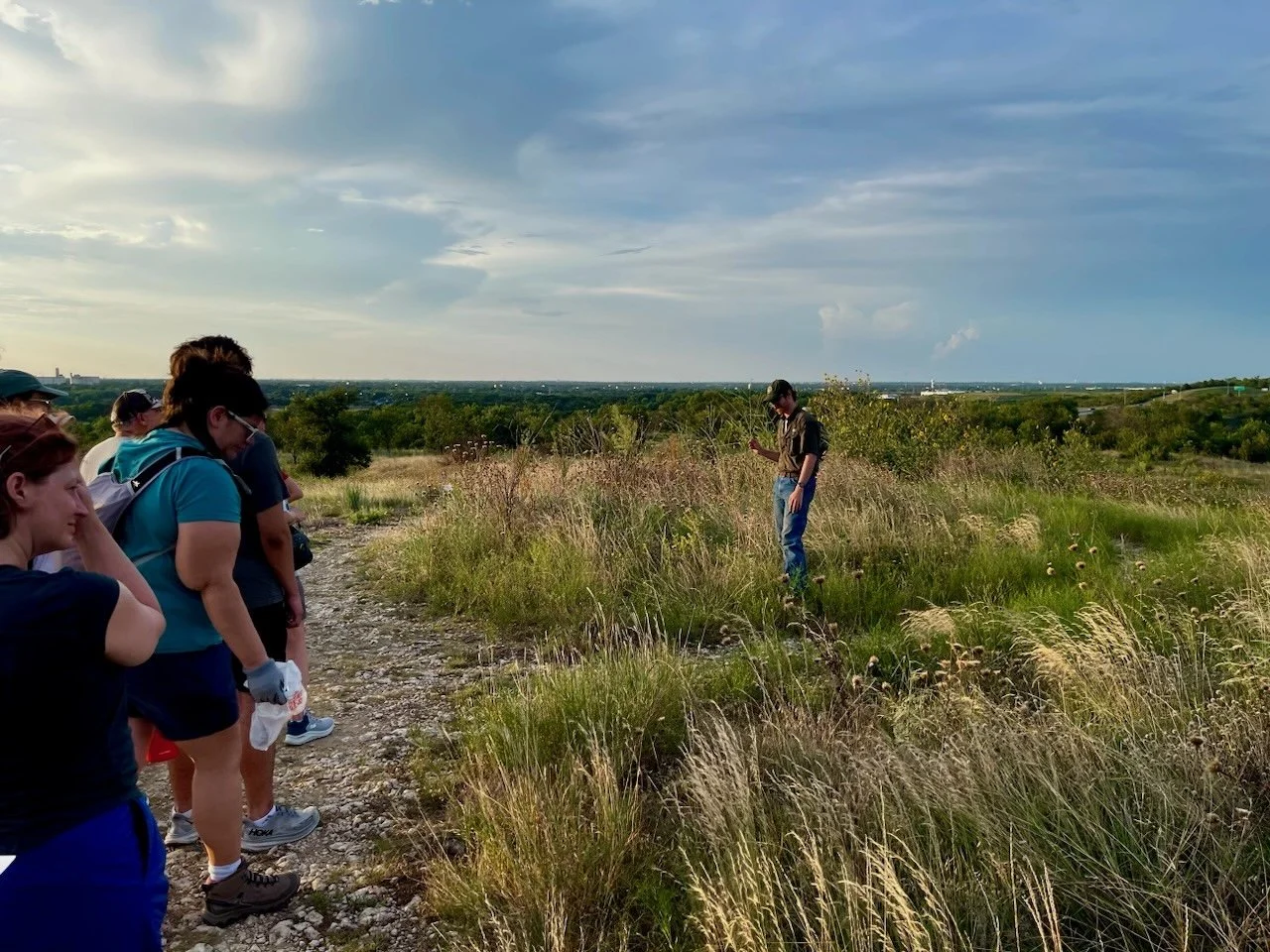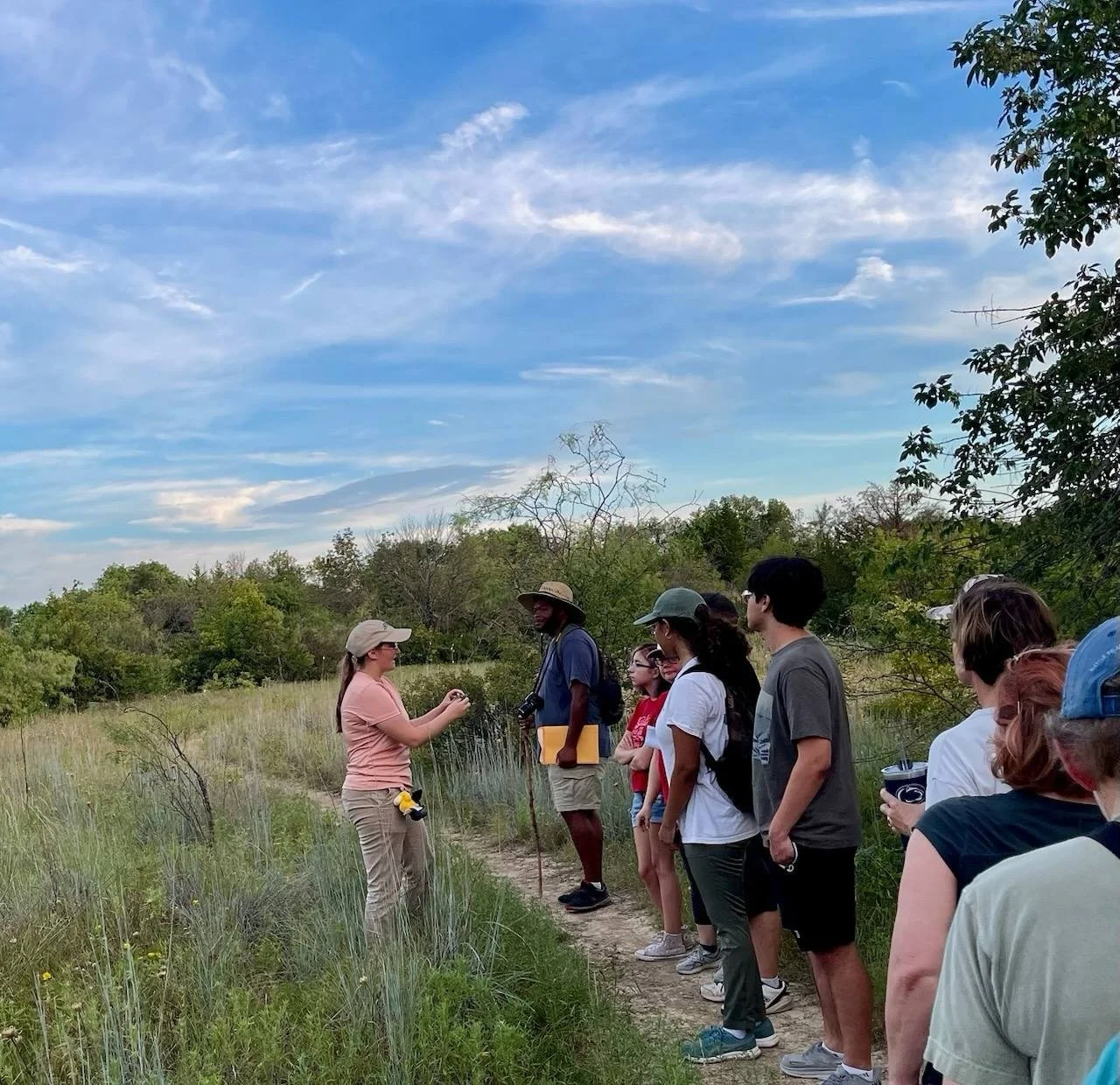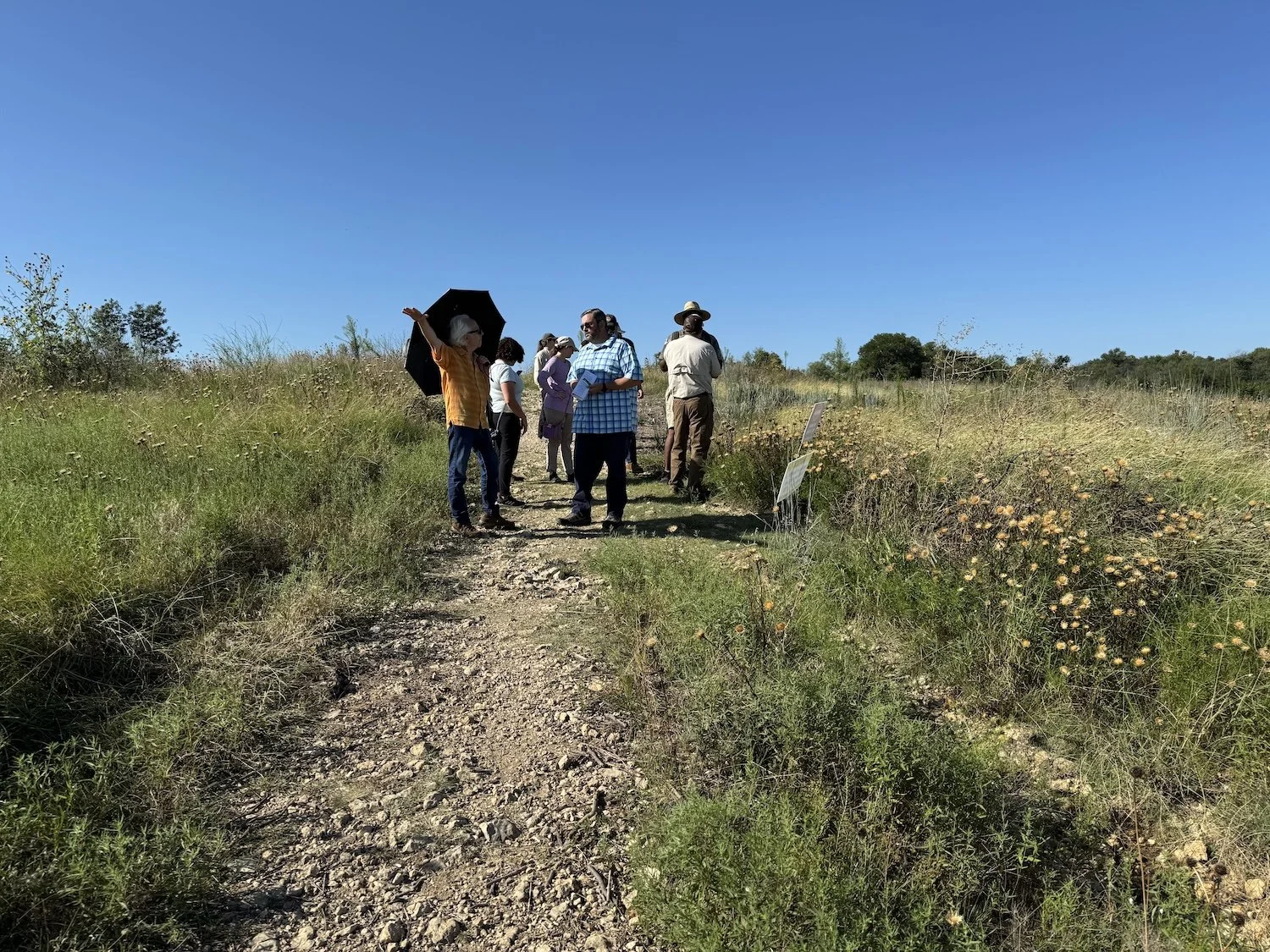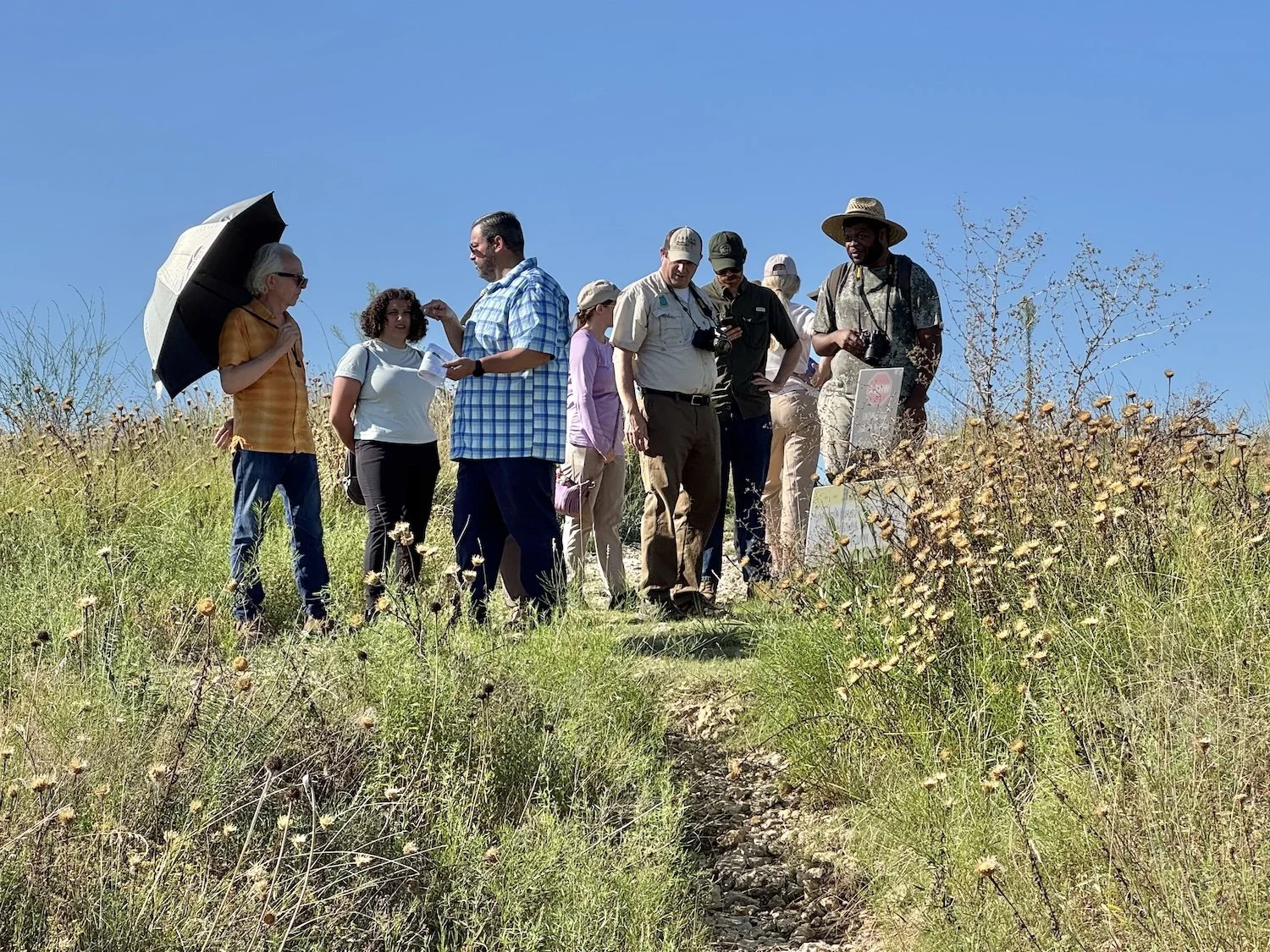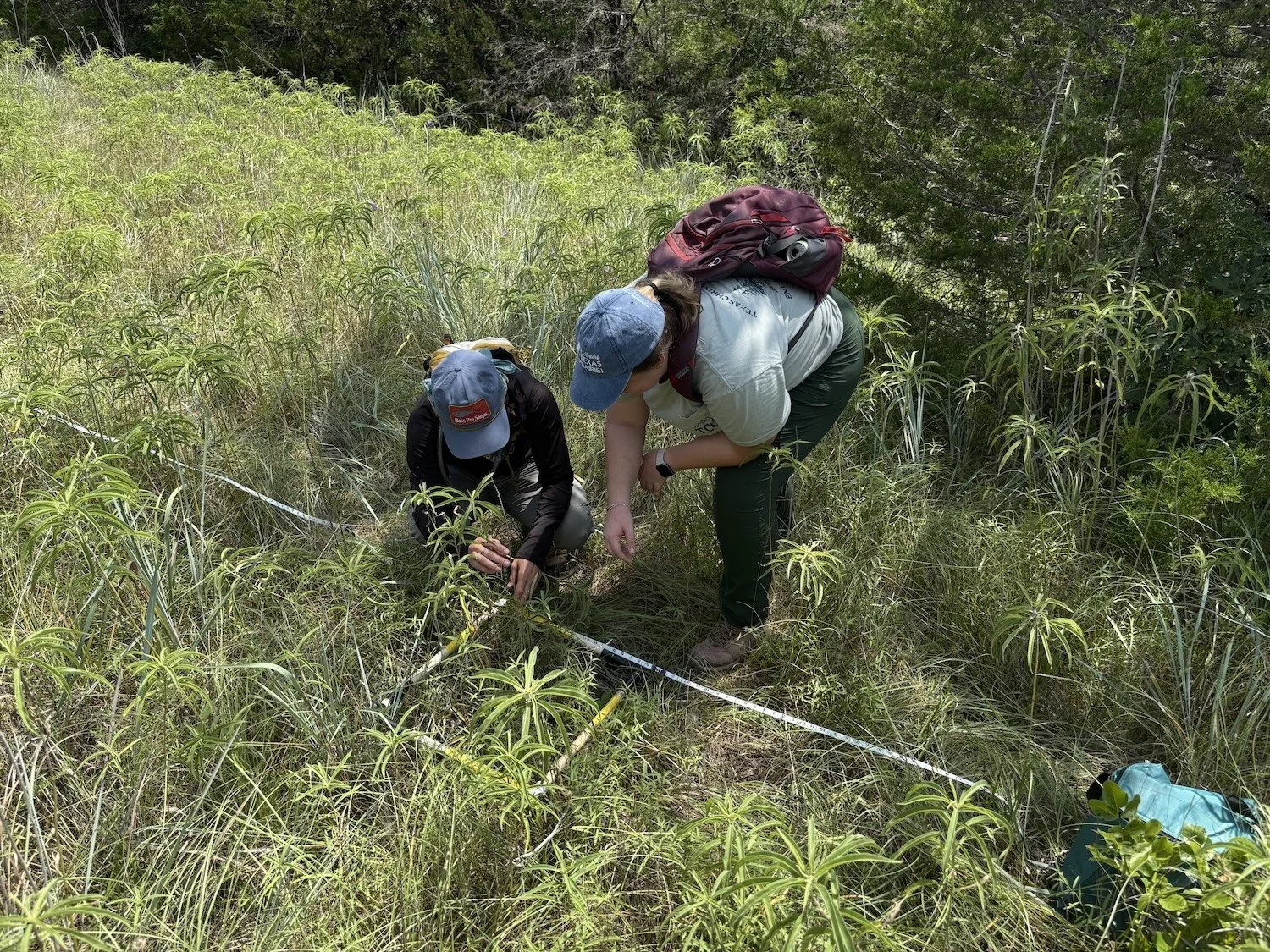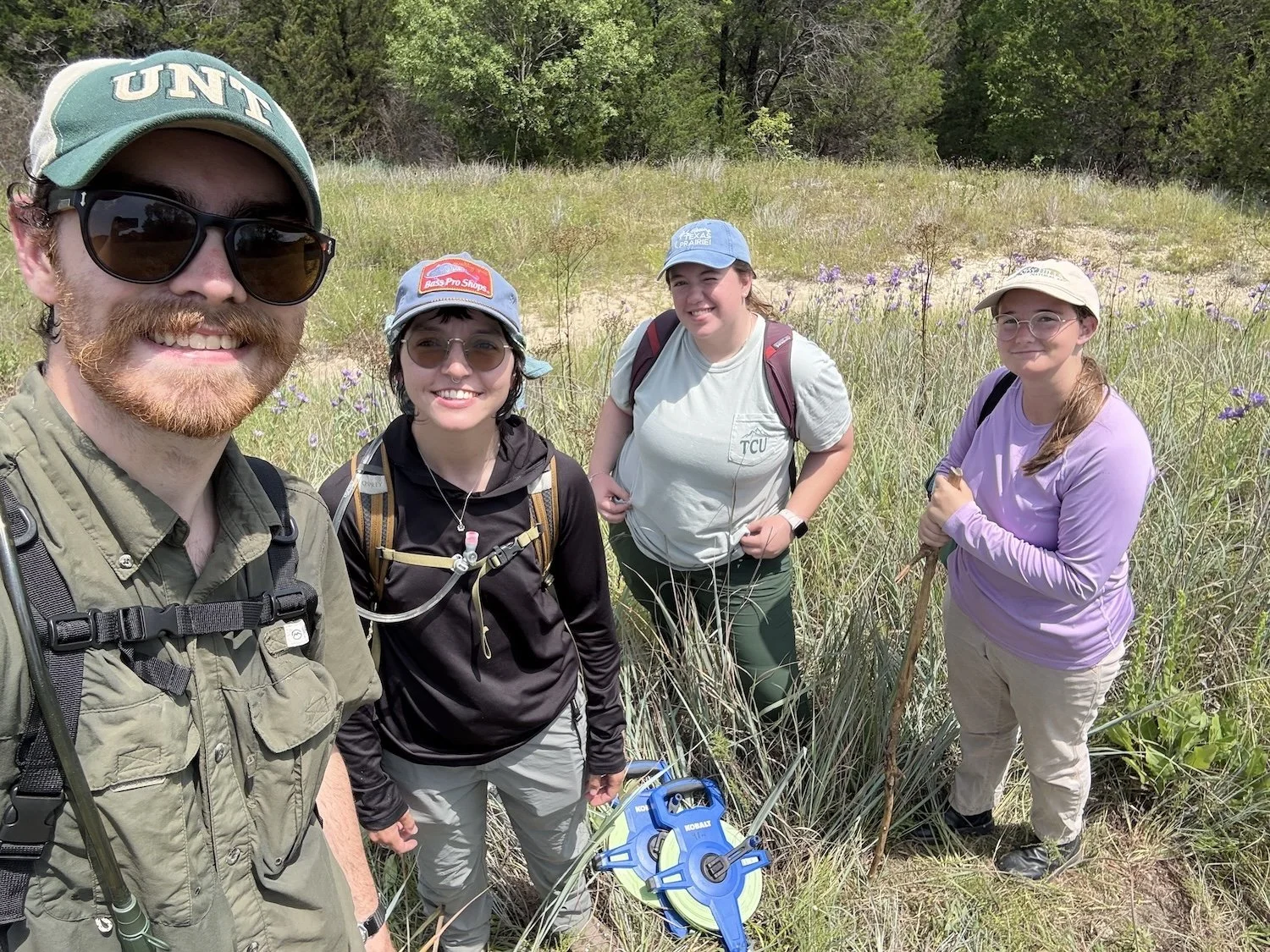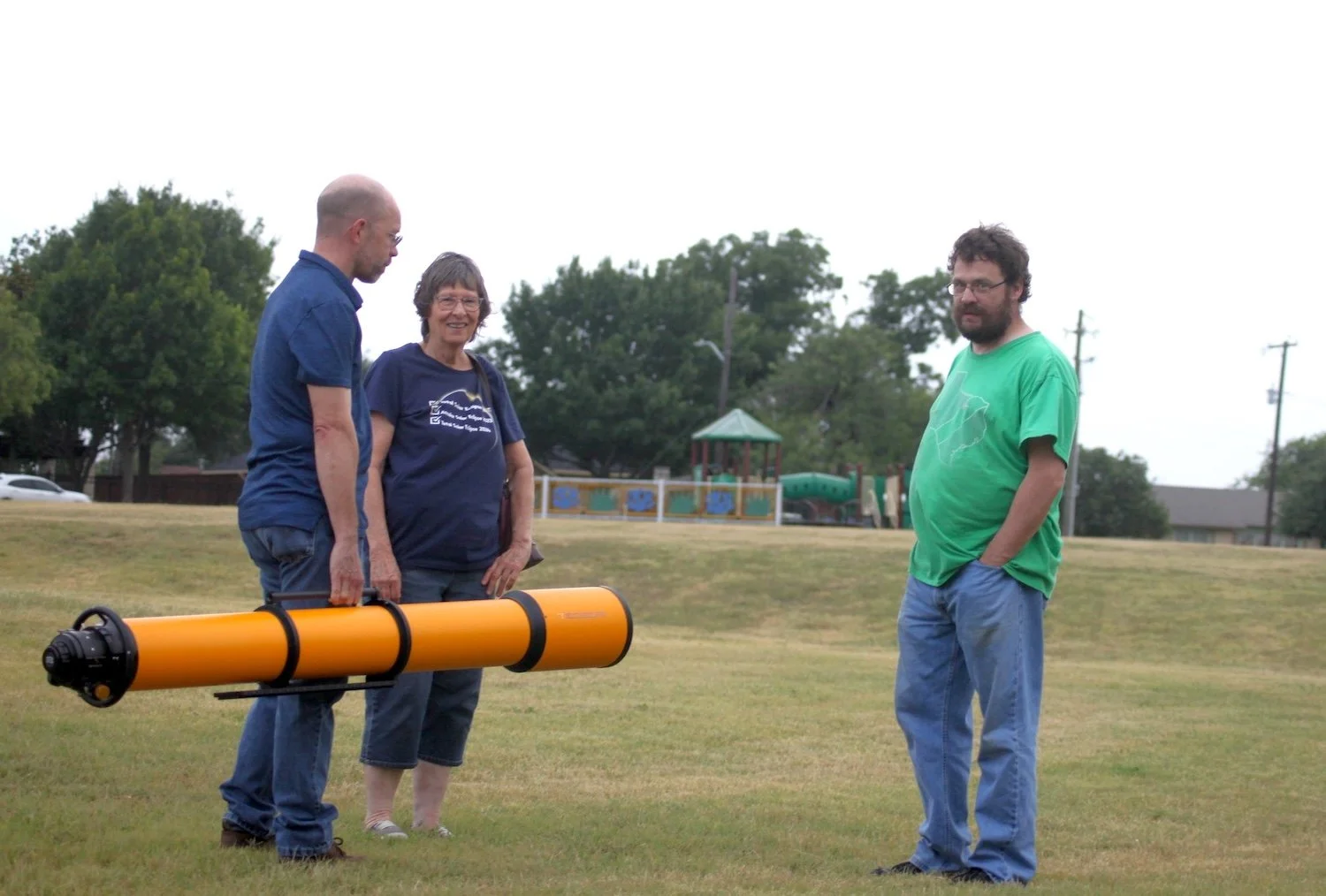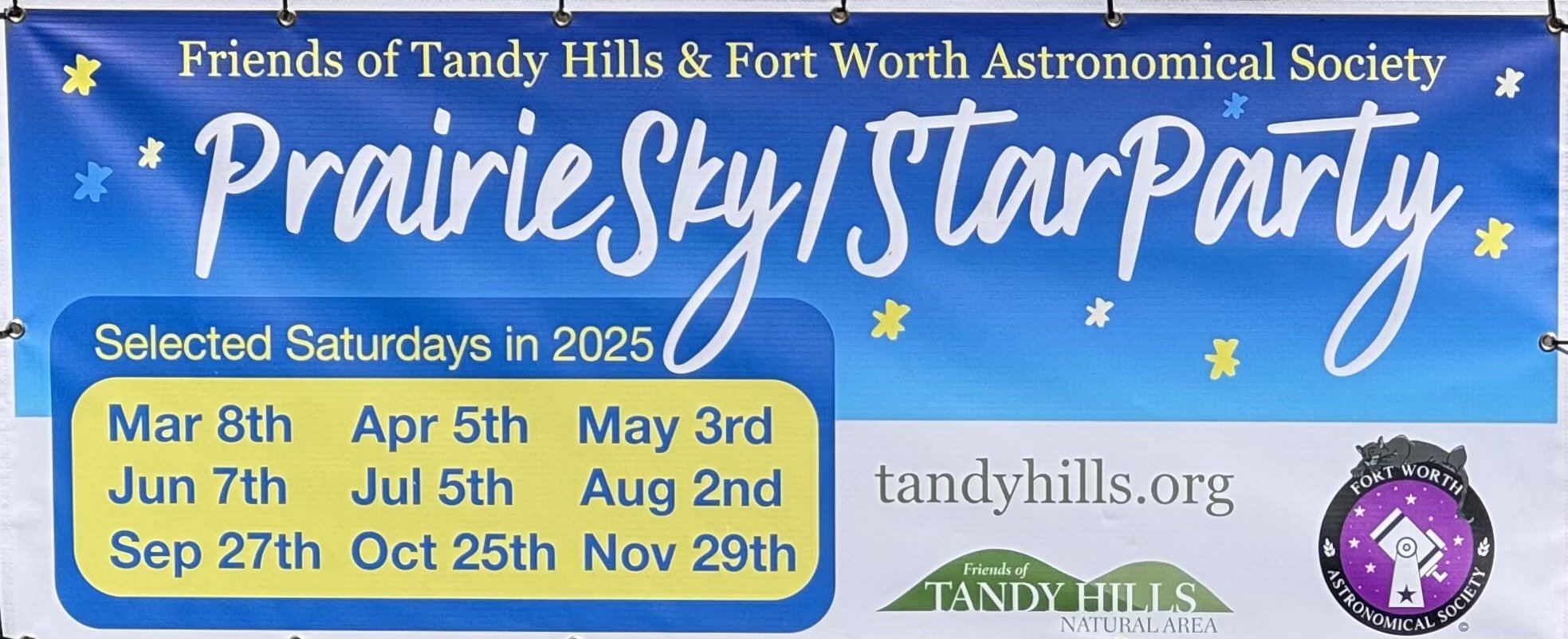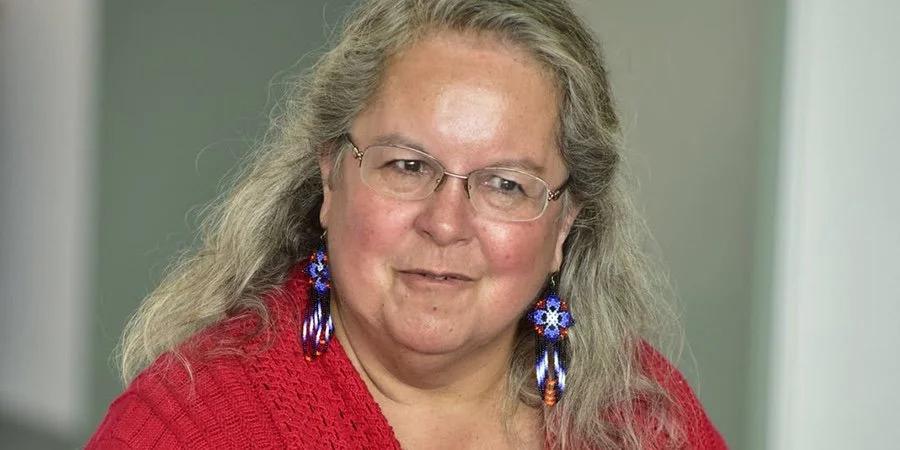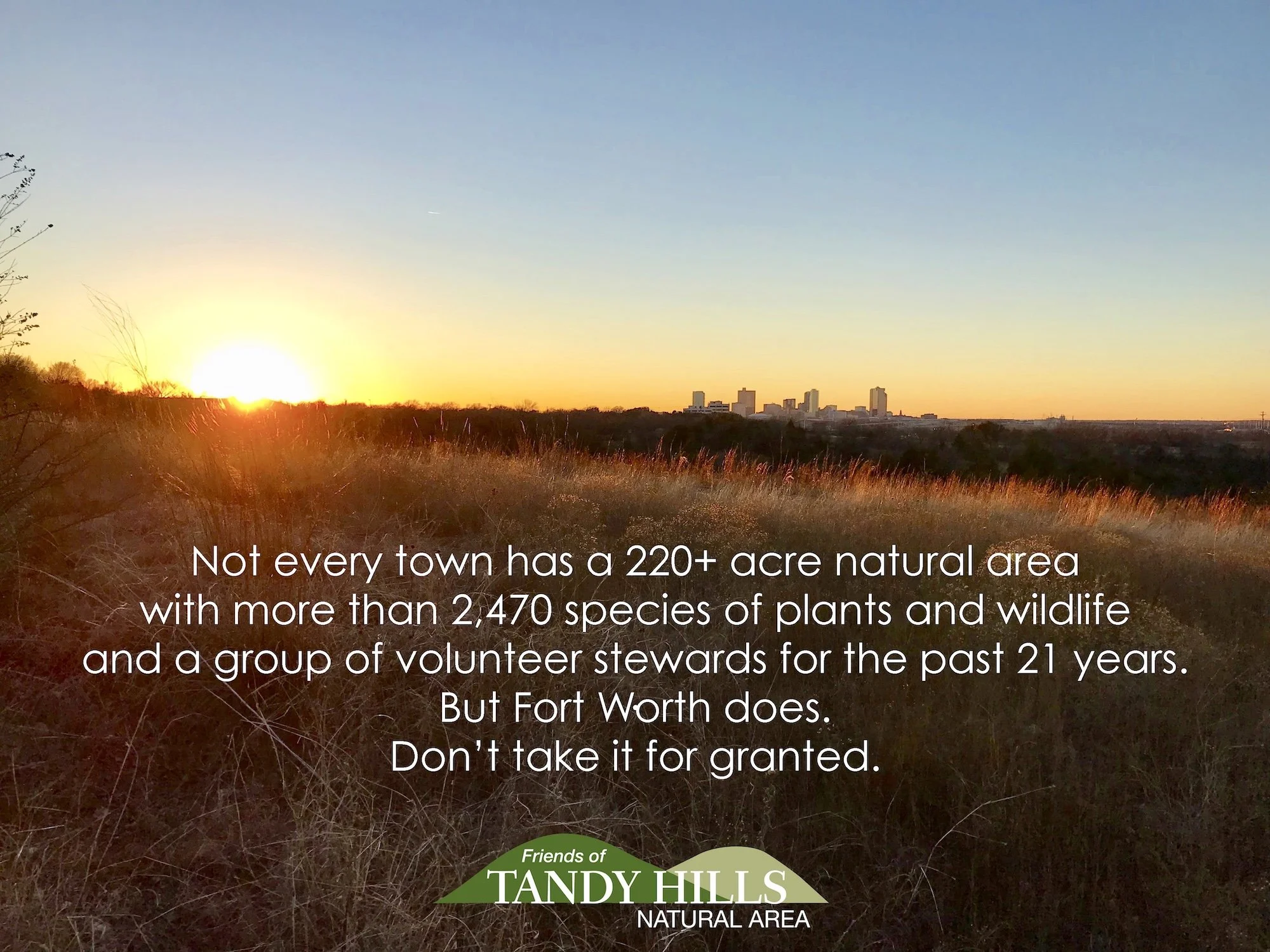Prairie Notes #224 - Grass-Land
Prairie Notes are monthly photo/journal observations from Tandy Hills Natural Area by Founder/Director, Don Young. They include field reports, flora and fauna sightings, and more, mixed with a scoop of dry humor and a bit of philosophy.
They are available free to all who get on the FOTHNA email list.
Grass-Land
Prairie Notes #224
August 1, 2025
1) Grass-Land
2) Field Report - July
3) New Species Report - July
4) Intern Spotlight - Keandre Rush
5) Newsworthy & Noteworthy
6) PrairieSky / StarParty Report
7) Prairie Proverb - Robin Wall Kimmerer
Grasses are the foundation of the prairie.
1) Grass-Land
According to Google AI:
“In essence, a prairie is a grassland, but not all grasslands are prairies. Prairies are a geographically specific and ecologically distinct type of grassland.”
Growing up in Fort Worth in the 50’s and ‘60’s, I never heard anything about prairies or grasslands. To me and most everyone I knew, they were simply “fields” full of grass to play and hide in. In school, the only mention of “prairies” was in some goofy cowboy songs. It was never mentioned that our native ecosystem is known as The Fort Worth Prairie. (E.J. Dyksterhuis would be appalled!)
Tandy Hills is rightly famous as a wildflower paradise. There are several hundred species here. But the wildflower season is mostly over. Now it’s the grasses turn on the prairie stage and they have their own jewel-box quality.
Grasses are the other, essential ingredient of prairies and Tandy Hills is home to about 80 species of native grass. We have lots of the Big Four grasses: Big Bluestem, Little Bluestem, Indian Grass and Switchgrass. But they are just the beginning. We also have some important short and medium grasses such as, Hairy Grama, Sideoats Grama, Seep Muhly, River Oats, Tridens, Sedges, and so on. Like most of Texas, we also have about 20 non-native grasses such as, Johnson Grass and KR Bluestem, but they are fairly well controlled by our Prairie Posse teams.
Early settlers gave accounts of an ‘inland sea of grass’ so tall that a man on horseback could disappear in the waves. Prairie grasses need lots of rain to reach their highest potential. With so much rain this year, relatively mild temps and the December burn, the grasses are thriving. Big Bluestem, for example, has not reached its mature height of 6’ - 8’ (or more) since 2010, but has already done so this year. Belying its name, Little Bluestem is actually pretty big this year. Some leaves are more than 6’ tall, as of late July. Indian Grass and Switch Grass are getting there.
Grasses are the heart of the prairie and serve several important functions. They are the dominant vegetation cover. Their deep roots bind the soil, prevent erosion and flooding and add vital nutrients. They provide habitat for a diverse array of wildlife and are designed to withstand drought and fire. Very importantly, studies show that they sequester C02 more reliably than forests partly because they store it underground.
We are very lucky that Tandy Hills survived. Wayne Clark, the former Director of the Fort Worth Nature Center & Refuge, and the first scientist to recognize the value of Tandy Hills wrote this in his 1989 Environmental Assessment:
“Much of the prairie that existed in the Fort Worth Prairie was still intact in the 1870s but by 1900 most of the prairie had disappeared, been degraded, or had declined. Overgrazing by domestic livestock and farming of wheat and cotton were the major factors leading to the demise of the prairie. In many areas where prairie still exists the land is situated on slopes that were less desirable for livestock and unsuitable for farming”
For me, the aesthetic beauty of prairie grasses is equally important as their utilitarian value. There is nothing quite as lovely as a sea of prairie grass in the fall. They are worthy of your appreciation and respect AND they are still fun places to play and hide in. Below are few recent and past photos taken at Tandy Hills throughout the years.
> CLICK on each image below to see it un-cropped and with captions.
> Thanks for reading Prairie Notes and supporting Friends of Tandy Hills Natural Area. Your donations are welcome HERE.
DY
Little Bluestem (Schizachyrium scoparium) lining one of the trails.
July 2025. The Big Bluestem is approaching its highest potential.
July 22, 2025. Little Bluestem on the left. Big Bluestem on the right.
2) Field Report - July
It may be hot and humid but if you need some prairie therapy, Tandy Hills is open for business. If you can take the heat you’re in for a treat. We had some rain on July 8th that really helped keep the grasses maturing. The Little Bluestem grass is taller than I've ever seen, above 6'. Summer Gayfeather (Liatris aestivalis) are blooming. Strange-looking, Green Comet Milkweed, is thriving all over the place. We also spotted an uncommon, Bordered Patch Butterfly. The meadows may look dried up from the street but they are very much alive when observed closely. So much to discover. Come on in and experience prairie bathing.
NOTE from Don Young: We have been burning through a lot of cash this summer with activities such as, keeping the meadows free of invasives, conducting plant surveys, prescribed fire, sponsoring science studies, etc., plus insurance, supplies, equipment, hired crews, website maintenance, etc. The core group members are all volunteers so all your donations go directly to keeping Tandy Hills properly maintained. Your generous donations accepted here: https://www.tandyhills.org/donate
Click photos to see them uncropped.
Summer thunderstorms bringing torrential rain started rolling across the prairie on July 8th.
One last look at the amazing Texas Bluebells before they fade into the summer sunset.
3) New Species - July
We picked up a few new species partly due to the moth-ing event on July 26th and our interns in the field. I have also observed an uptick in the number of people visiting Tandy Hills to observe and post on iNat. We ended the month of July with 15 new species bringing the new total to 2,466 species. Notables include, a new moth species, a new dragonfly, a new lichen and a couple of spiders. Check out a few of them below and see them all at the Tandy Hills iNat Project Page HERE.
4) INtern Spotlight - Keandre Rush
We are very fortunate to have summer interns helping out at Tandy Hills. They are typically young, energetic, eager to learn, and ambitious to some extent. Our newest intern is a young man named, Keandre Rush. Keandre started working with us in June and has already established himself as a keen observer of nature and its inhabitants. HIs duties include, removing invasive species, herbicide treatments, plant surveys, species documentation on iNat and engaging with the visitors Tandy Hills.
Keandre is 24 years old and was born in Fort Worth. He has a degree in Biology from Texas Woman’s University in Denton. His future plans are still forming but his interests include, hiking, conservation, restoration, nature photography. Reptiles, in particular, are a passion of his.
He also has a real knack for bird watching and other wildlife observations. In July, alone, he spotted and documented six NEW species. He even spotted a Coyote at Broadcast Hill. This young man has a gift for observing and interpreting nature. He has a bright future and we are pleased to have him on our team. Here a few of his recent observations that clearly show his abilities. (See more in #3 above.)
5) Newsworthy & Noteworthy
>>>>>>> The New York Times has a new report on the role of iNat and citizen scientists on major research papers. Fascinating stuff. Quote from the article:
“Since iNaturalist was founded in 2008, observations submitted to the platform have been incorporated into more than 5,000 peer-reviewed papers. The data has helped scientists identify new species, track the spread of invasive organisms, pinpoint critical habitats, predict the effects of climate change and explore animal behavior, among other things.”
Read this free article HERE. Photo by, Frederick Kundert
>>>>>>> A nice crowd of about 45 people showed up for the, Tandy Hills Sunset Hike, on July 26th. Organized by City of FW Natural Resource Planner, Michelle Villafranca, and co-hosted by Friends of Tandy Hills. There was interpretive hiking and some moth-ing after dark. BTW---This event was being managed by 5 current and former interns who really got to polish their interpretive skills. Well done, team!
>>>>>>> On July 24th, Friends of Tandy Hills (FOTHNA) had an important meeting with Dave Lewis, the new FW Park & Rec Director (PARD). We were joined by a stellar team of supporters and advocates for Tandy Hills including, Sam Kieschnick and Rachel Richter of Texas Parks & Wildlife, Michelle Villafranca of FW Park & Recreation Dept, Kate Morgan of Native Prairies Association of Texas-FW, Debbie Branch of Keep FW Beautiful, and 4 interns. Greg Hughes, Debora and Don Young represented FOTHNA. The main topic was getting city help in addressing the various vandalism issues that plague Tandy Hills. Dave listened closely to all of our comments and had some helpful ideas. Follow-up meetings are planned.
>>>>>>> The new interns for 2025 got to conduct some plant surveys at Tandy Hills in July. They were joined by our seasoned, past interns and PARD Natural Resource Planner, Michelle Villafranca.
6) Prairie Sky / Star Party report
The July star party was cancelled due to cloudy skies but a few members showed up just in case it cleared. The next star party is August 2nd. (Sunset is at 8:26 PM) See the full schedule on the website HERE. Come out and see the night sky and visit with members of the Fort Worth Astronomical Society (FWAS). 2025 is their 10th straight year at Tandy Hills.
Here is the sky-watching commentary for August from FWAS rep, John McCrea:
For our August 2nd FWAS/Tandy Hills star party, we will continue summer under the stars with our favorite summer constellations. The center of our galaxy can be found in the constellation, Sagittarius (the archer). Also, visible will be some of the well-known constellations such as: Scorpius (the scorpion), Lyra (the lyre), and Cygnus (the swan). The remaining are Ursa Major, Cancer, Virgo, and Hercules. The summer triangle (Vega (25 LY), Deneb (1,411 LY), and Altair (17 LY)) will be visible. Vega will be at its highest point of the year, almost on the Zenith.
The sun will set at 8:26 PM on August 2nd. The moon will be a 7-day old waxing crescent and will be in the constellation Libra (the scales). The planet Mars will be in Virgo but it will set around 10 PM.
The Perseid meteor shower will be August 17 to 24, with the peak on August 12-13.
7) Prairie Proverb - Robin Wall Kimmerer
“Wind is the dance partner of the prairie. And every grass species has a different move; the whole stem of Little Bluestem shimmies in the wind, Indian Grass arches and falls, while Big bluestem waggles at the top and vibrates at the bottom. Switchgrass pirouettes in the air. Prairie Dropseed leaps like a fountain. A ballet of wind and grass – a dance that you may never see.”
The quote is from a 2028 essay published by, Little Toller Books. Photo by, Tim Peterson
Become a Friend HERE: https://www.tandyhills.org/donate
Prairie Notes© is the official newsletter of Friends of Tandy Hills Natural Area, a 501 (c)(3) non-profit organization. All content by Don Young except where otherwise noted.



